October 14
How to Cook a Whole Alligator on a Meadow Creek PR60T
3 comments
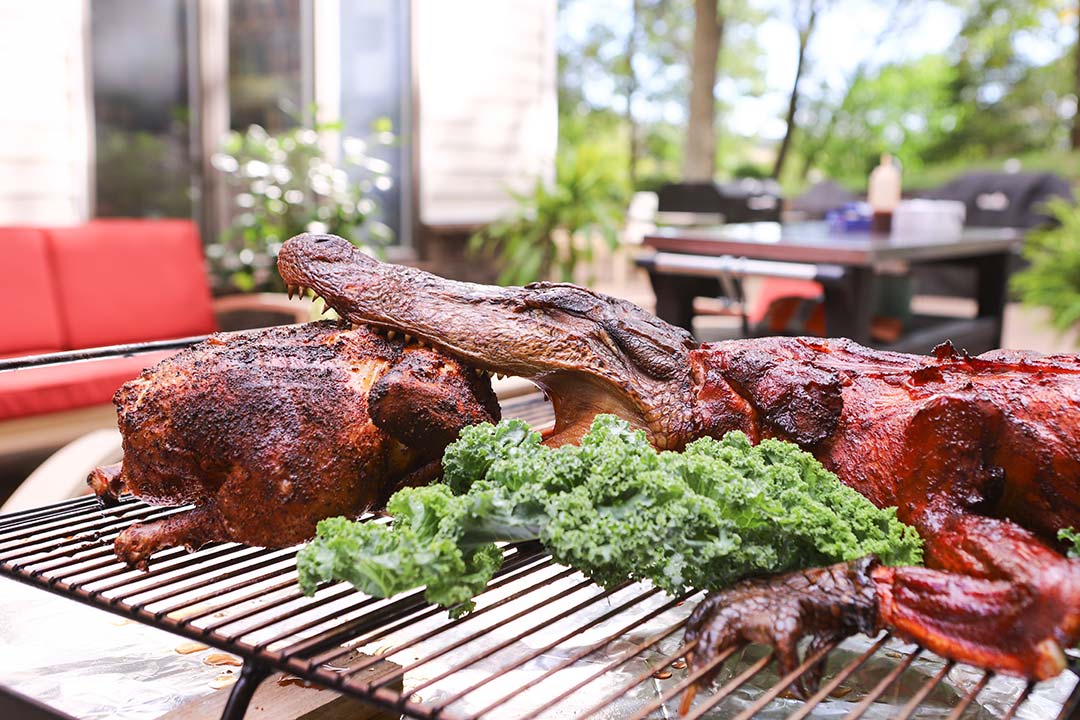
In this post you'll learn how to cook a whole alligator with step-by-step instructions and photos. I'm using my Meadow Creek PR60T Pig Roaster for this recipe.
Nothing will get a reaction from your guests or buddies like cooking a whole alligator on the smoker. The thought of cooking a swamp critter is repulsive to some, but others will get a big kick out of it.
Cooking a whole gator is adventurous and interesting—an entertaining break from the chicken, ribs, and briskets we are all accustomed to. I mean, it's not every day you get to work on a reptile with dinosaur-like feet and a bite force three times that of a lion or hyena!
Watch a photo slideshow video of my alligator cook here:
There’s surprisingly little information online about cooking a whole gator, and I must give credit to Craig, the BBQ Ninja, who is truly an authority on smoking whole gators. His smoked gator video with Malcom Reed is helpful, and he also took the time to answer some questions privately in Facebook messenger.
This was my first time cooking an alligator, so I'm certainly no expert, but I am pleased with how it turned out. Most of my family enjoyed it too. We even had the opportunity to share it with my wife's parents, and my father-in-law thought the flavor and texture were amazing.
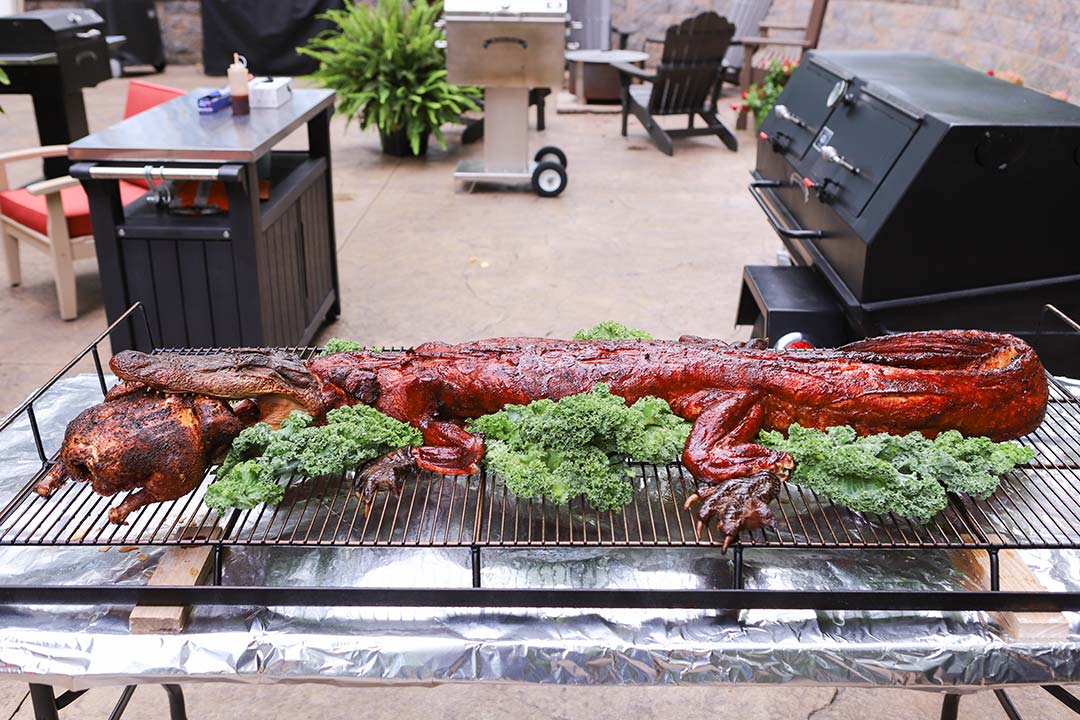
In this story, I’m cooking a 46-pound alligator from Louisiana Crawfish Co. They couldn't tell me exactly how long it would be, but estimated it would be 4–5 feet. I was pleased to find out this critter was around 6 feet long, which looked awesome on the PR60!
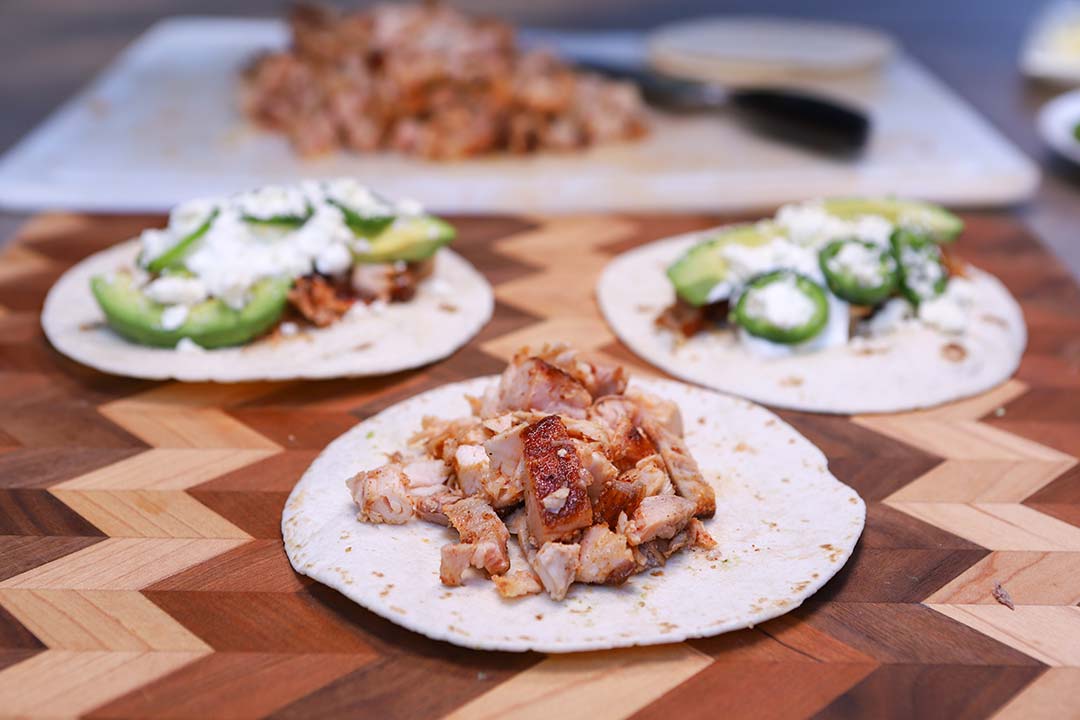
I wanted a simple, yet amazing way to experience the gator meat, so I chose alligator tacos with a Mexican theme. I adapted this recipe from GrillGirl. Keep reading to learn more about how I made these.
Here are the steps I followed to cook the alligator on my Meadow Creek PR60T.
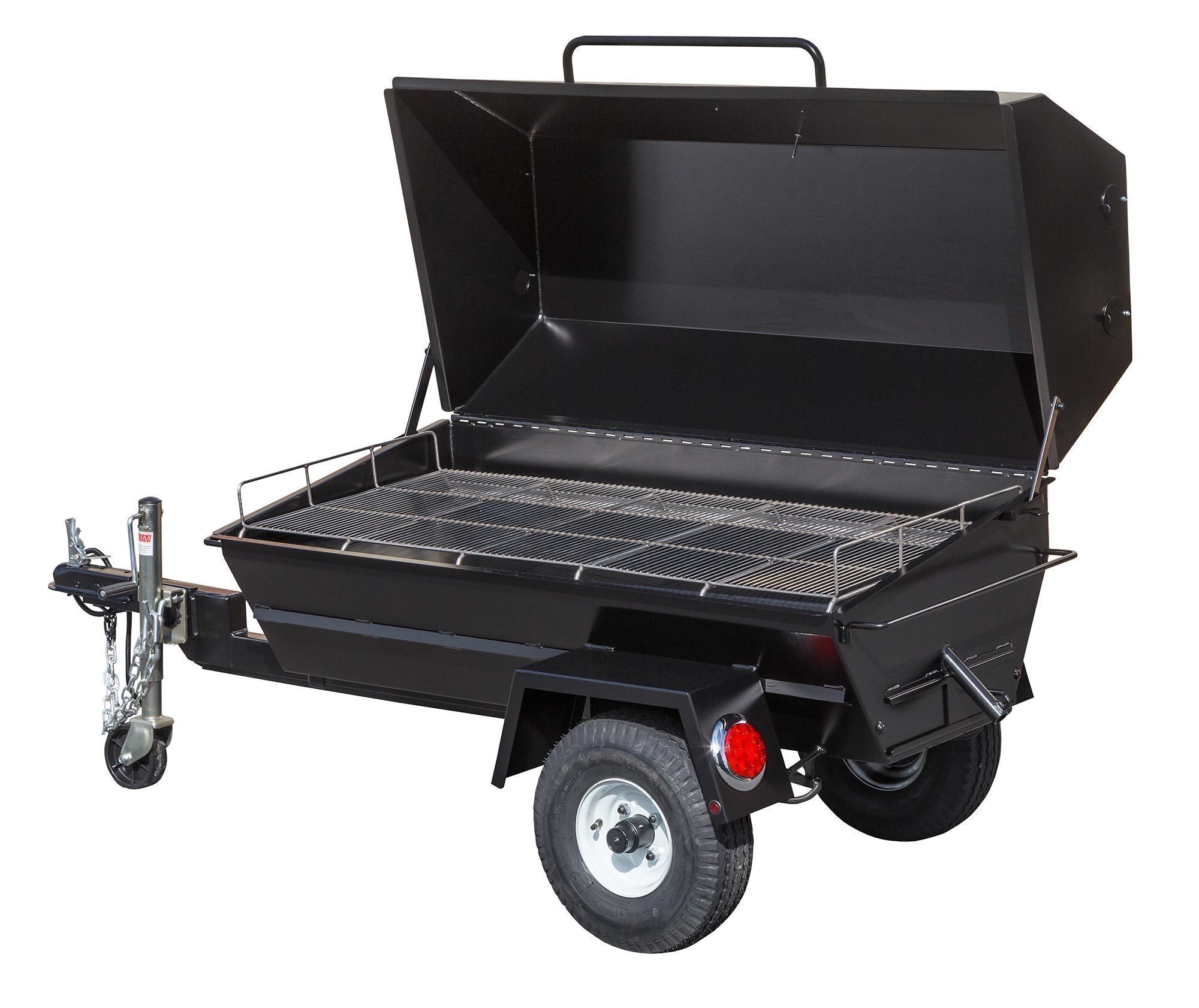
Step 1: Thaw and brine the whole gator. The gator ships frozen overnight in a Styrofoam box and can thaw in this box although you might need to add some ice to keep the thawed portion cold enough for the couple of days it takes to thaw. I ordered mine on a Thursday and received it on Friday. I left it in the box to thaw until Sunday. By then it was mostly thawed and ready to brine. See my notes on brining below.
Step 2: Remove the fat from the tail. This is key to removing the gamey flavor from the tail. Instead of explaining how to carve out the fat, I'll recommend you watch the video the BBQ Ninja did with Malcom, explaining how to open the tail and remove the non-rendering fat. Click play on the video below to start at the place where they explain how to prep the tail. I also have photos below of what it should look like after removing the fat.
Step 3: Season all of the exposed meat with Killer Hogs The BBQ Rub, including the inside of the tail muscles you filleted open. Fold the tail muscles toward the center to close the gap.
Step 4: Prop the jaw open with a chunk of wood. You might need to work the jaw a while to get it open. It needs to be wide enough to slide a whole chicken into it's mouth. Smoke a chicken separately for stuffing into its mouth when you garnish it.
Step 5: Cook the gator at 275 degrees until the tenderloins in the tail reach 150 degrees internal temperature. The trick is to probe through the bottom tail muscle and stick the tenderloin. Mist the meat with water every 45–60 minutes to keep it from drying out. Glaze it with a 50/50 mix of Killer Hogs The BBQ Sauce and The Vinegar Sauce 15–20 minutes before the gator is done. I would plan on a cook time of roughly 4 hours.
Step 6: Garnish the gator. Move the PR grate to a table and surround the gator with kale and slide a smoked chicken into its mouth. If you're using a plastic table, set the hot grate on wooden blocks to keep it from melting the table. You can also cover the table with aluminum foil to make clean-up easier.
Step 5: Remove the meat and chop it for serving. The BBQ Ninja recommends saving the tail, a couple of strips along the spine, the legs, and a couple of golf-ball-sized pieces from the jowls. He doesn't save the ribs, but Louisiana Crawfish Co sells them, so apparently some people eat those too. Just be careful what you mix in with the best meat because some of the other parts of the gator might have a strong gamey flavor and metallic aftertaste.
My favorite answer to this question is, "It tastes like alligator!"
All snark aside, an alligator has a couple of different "types" of meat:
As with any meats, the flavor will depend on how the animal was raised. I recommend sourcing a gator from a reputable source, such as Louisiana Crawfish Co. and removing the fat as recommended for the best results.
It's not vital to brine the alligator, but since parts of it are lean, it beneficial because it helps to keep it from drying out. The biggest challenge with brining a gator is finding a container big enough to brine it in. Read more about this in the section on brining below.
Should you wrap the gator in bacon?
A lot of people wrap their gator in bacon to keep the meat from drying out, but I was skeptical of this method. I didn't want the hassle of wrapping the entire thing in bacon and I think the gator looks nicer without a coat of bacon.
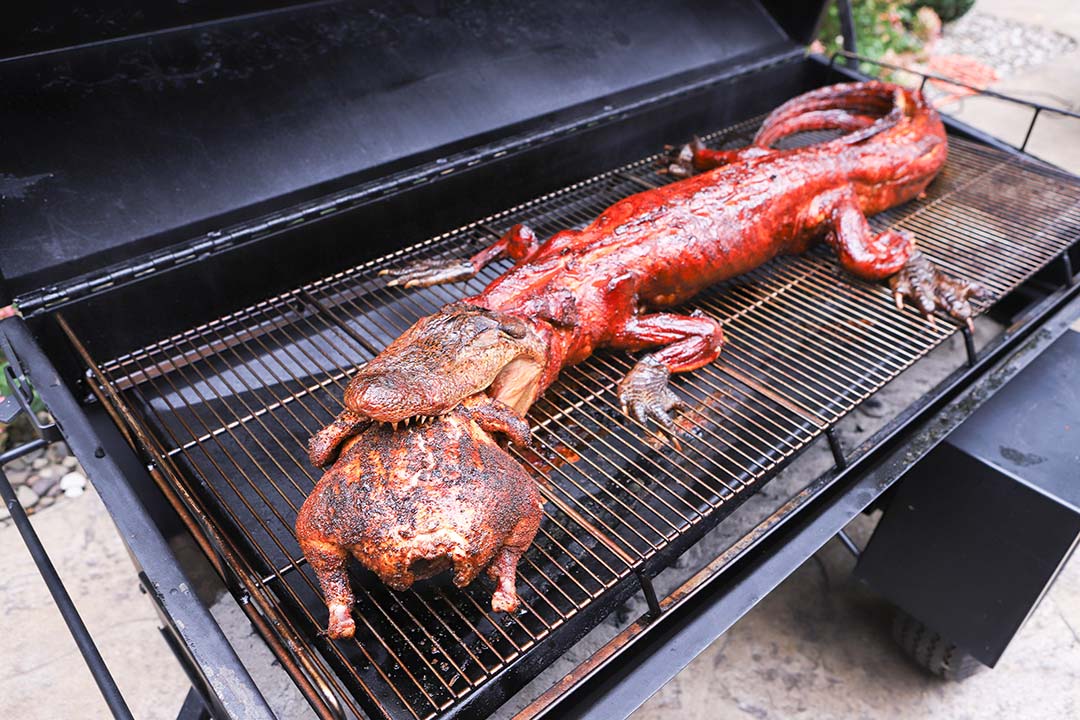
If you’re looking for a versatile charcoal-fired smoker that holds a bunch of meat and is easy to use, you've got to check out the PR series. Their design is straightforward and we offer a few upgrades to make them extremely versatile.

“I have to give [the PR60] an over-whelming 5 stars! It will give you fantastic results whether you are a professional pig cooker or this is your first. It holds a variety of temps very well so whether you are cooking low and slow hogs, brisket, pork shoulders, whole lamb, or baked potatoes for an army, this cooker will do it. I would buy another and not look elsewhere. If you join the Meadow Creek Equipment Owners group on Facebook, you also have the luxury of getting real help from real people who are hobbyists and professional caterers alike. Best cooker with best results and versatility (along with the BBQ42) I’ve ever owned (and I’ve owned 23 cookers).”
- Gerry Pierick -
Buying a whole alligator is easy. Not cheap, but easy.
I purchased mine from Louisiana Crawfish Co. and it arrived by FedEx the following day in this Styrofoam chest. The gator was still frozen and everything was fine except that the foam chest had cracked in transit, probably because the gator was too big to lay flat in the bottom of the box.
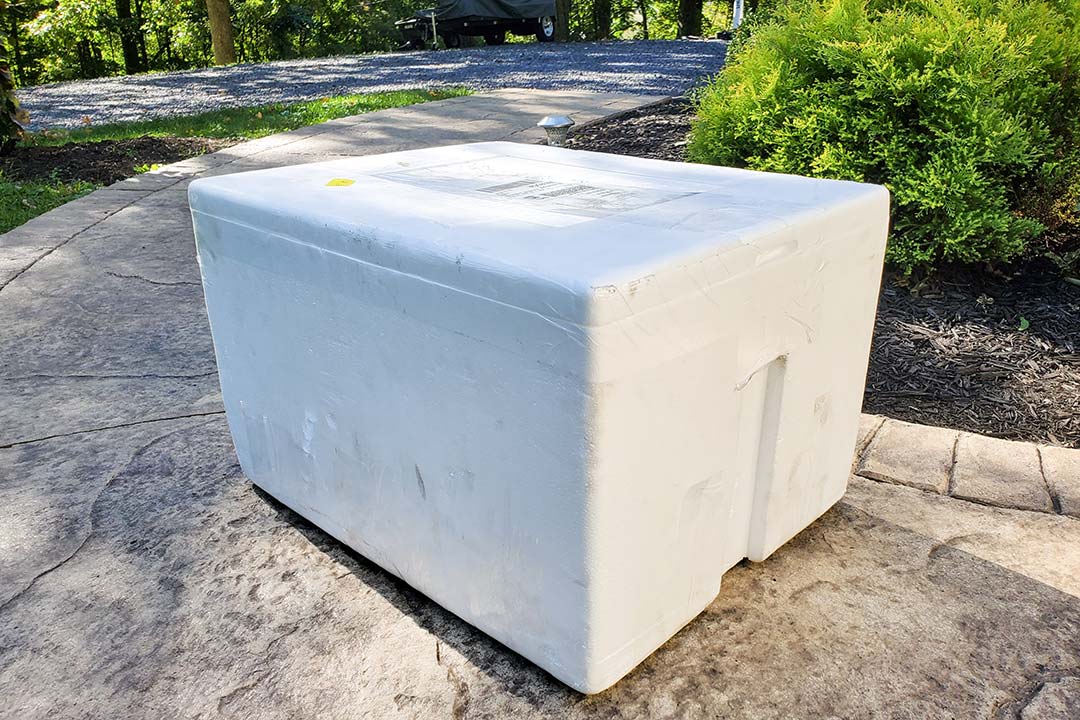
I communicated with Louisiana Crawfish Co. by email for weeks before I was finally ready to purchase and they were always prompt and friendly to work with. If I need another gator, I will not hesitate to buy from them again.
The gator arrives frozen and curled up, so you will need to figure 2–3 days for thawing and brining.
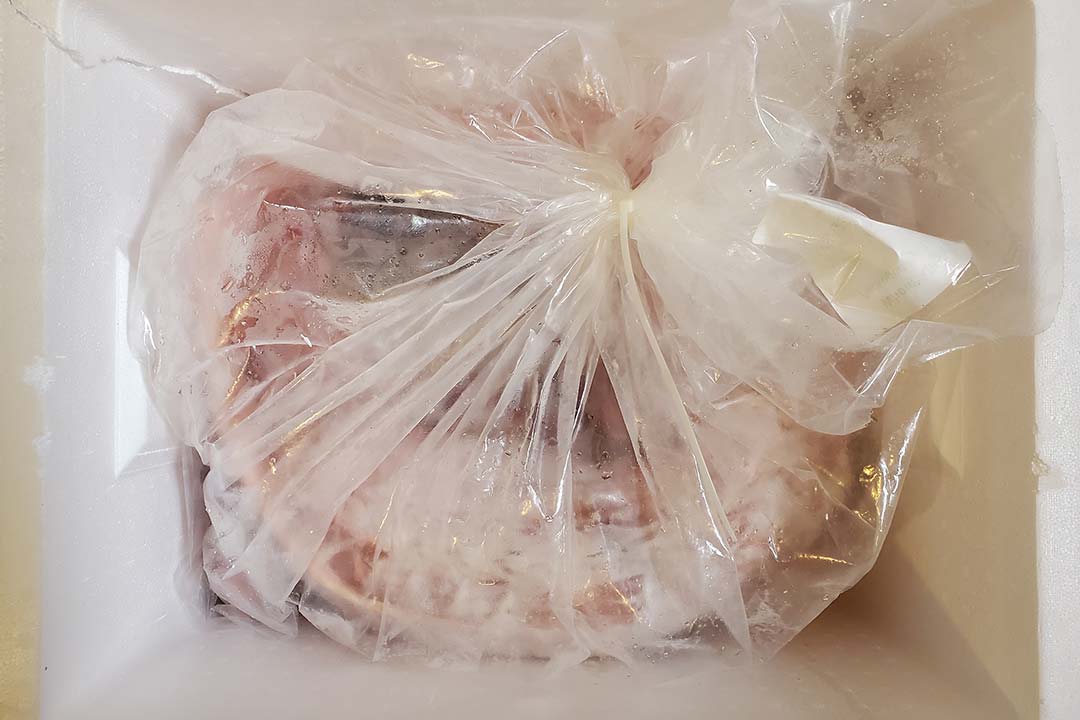
As I mentioned above, you can thaw the gator in the chest it's shipped in but you might need to add some ice to keep it from getting too warm.
You might be able to brine it in the Styrofoam chest it ships in, but mine arrived with a crack and even if it hadn't, I'm not sure how long the Styrofoam would last before it starts leaking. The only container I had that was big enough to hold the gator was a 70-quart ice chest which was too narrow for the gator to fit nicely and too small to easily keep it cooled with ice. Once I dropped the gator into the brine, it thawed quicker than I expected, so I ended up shortening the brine to a few hours, then removing the brine and packing the gator with ice to keep the meat cold overnight.
Brining Tips:
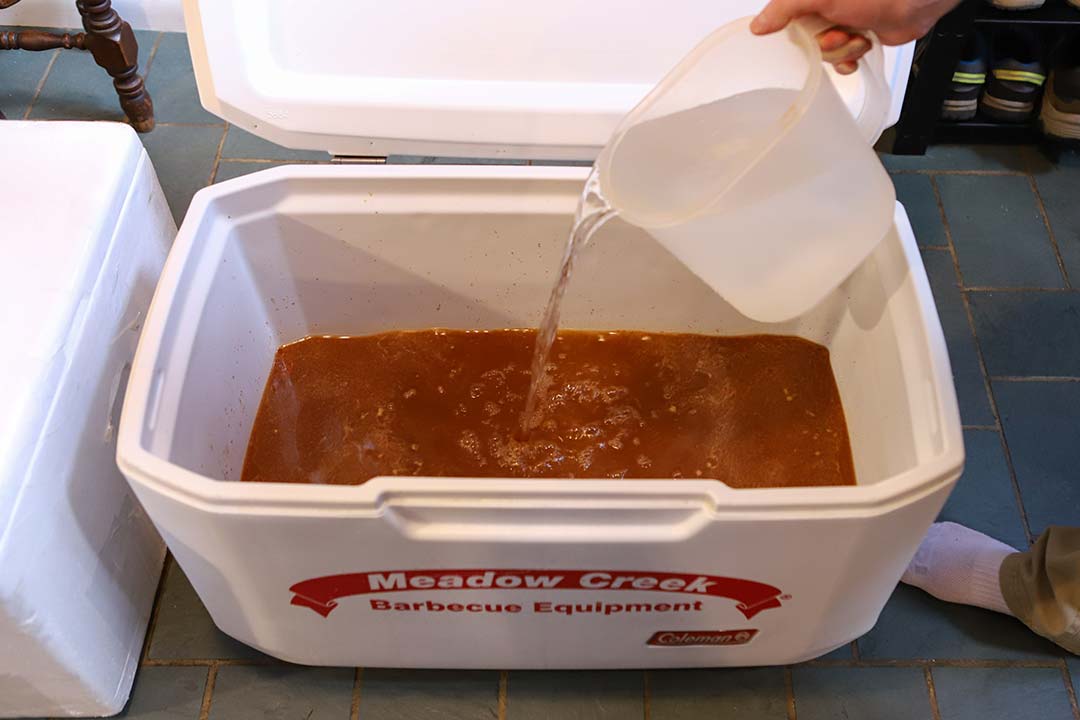
Mixing the brine
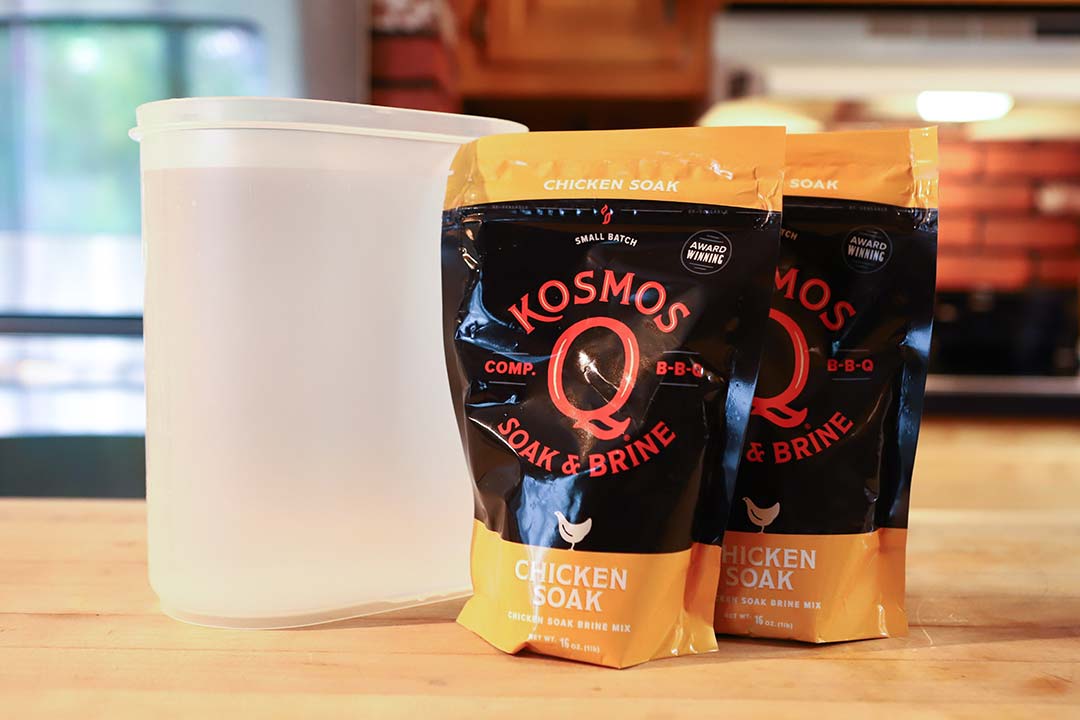
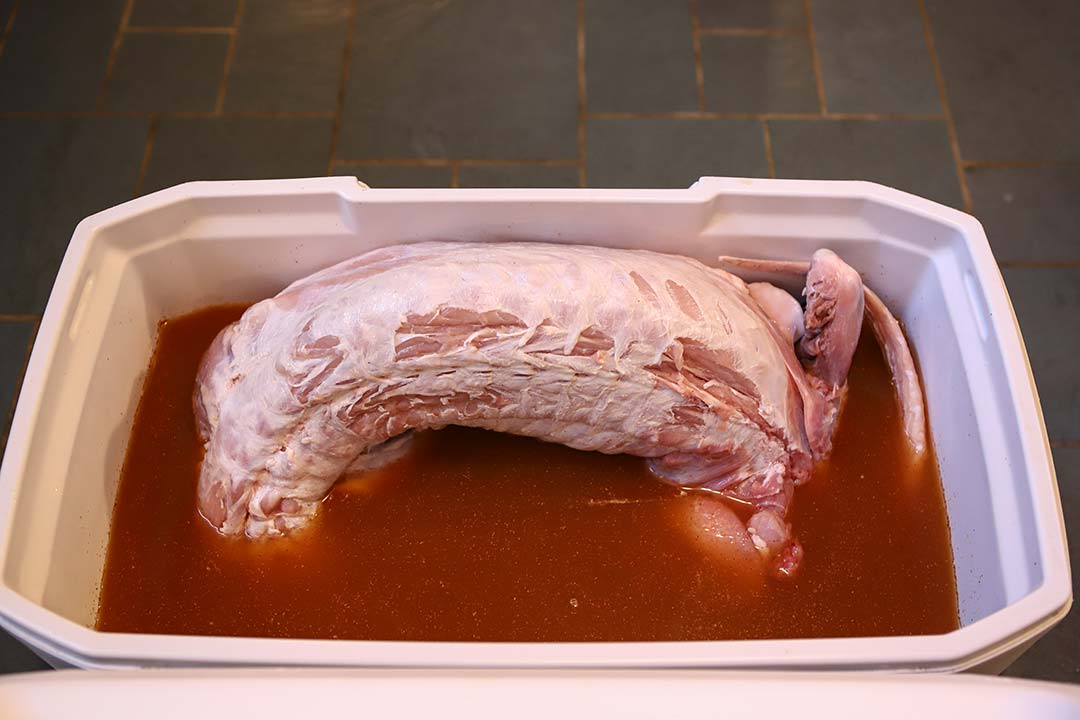
The over-sized gator in my 70-quart ice chest
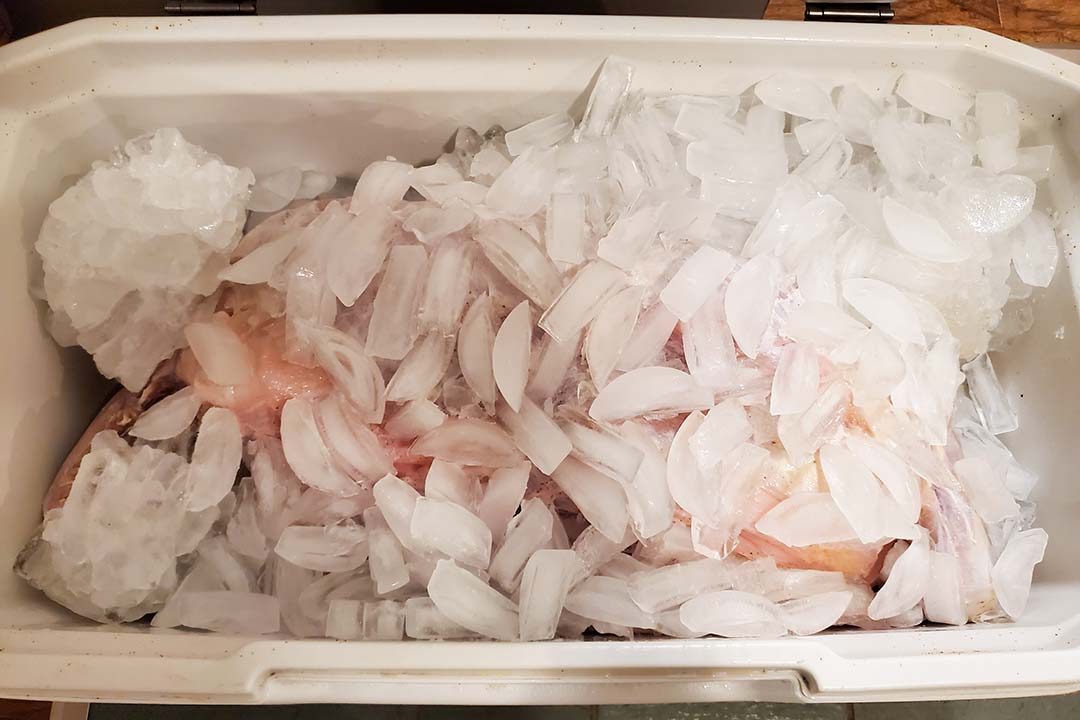
Brine removed and packed with ice to keep it cold overnight
Enjoy these photos of the alligator being prepped for the smoker.
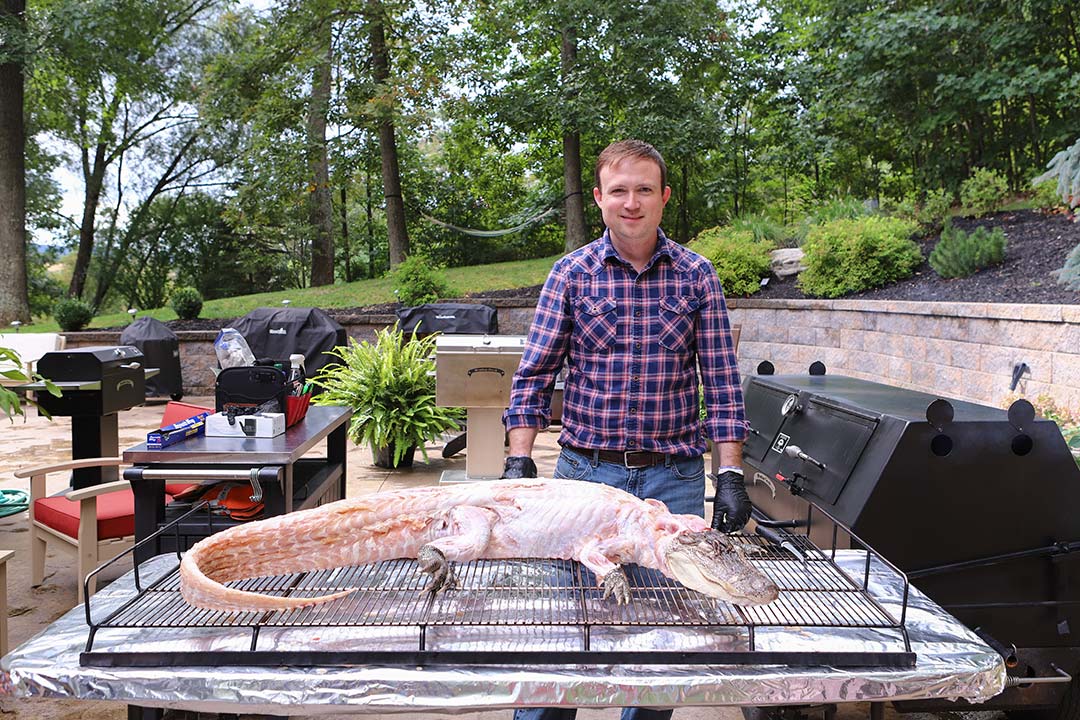
Whole alligator ready to prep for the smoker
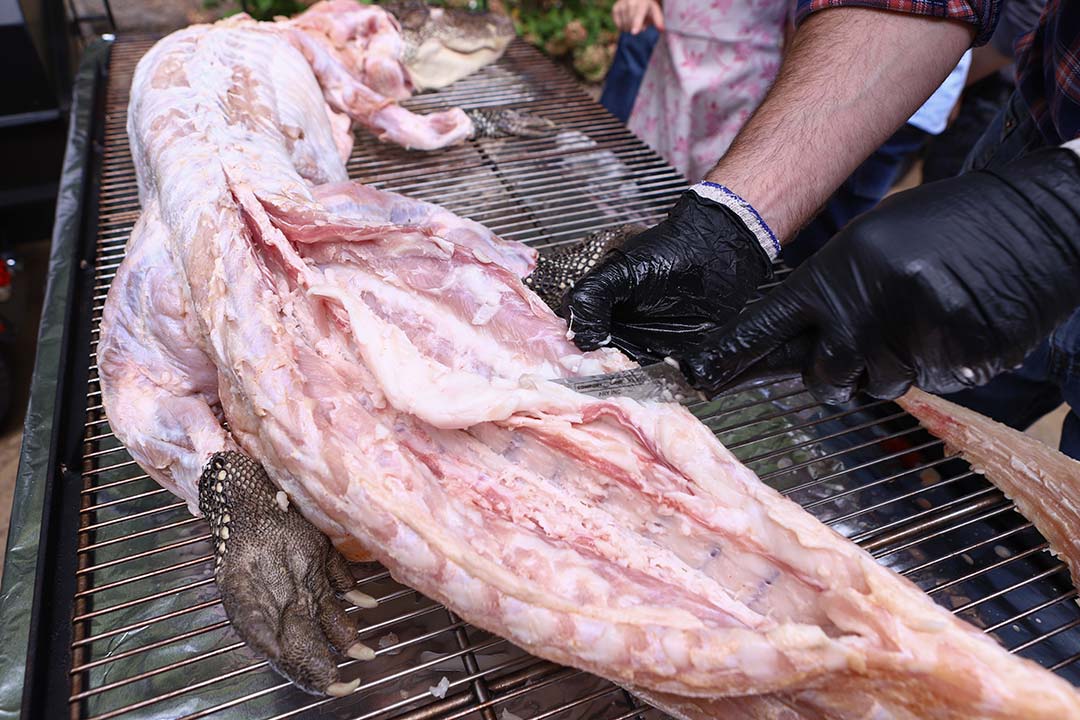
Removing the fat from the top tail
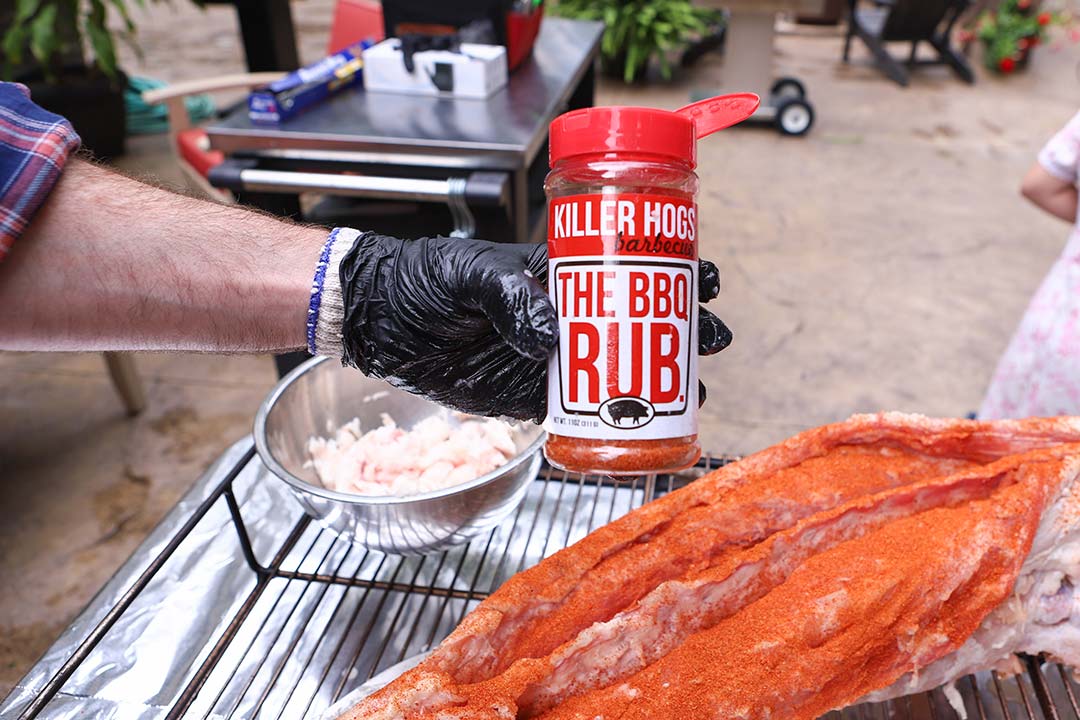
Seasoning the tail with Killer Hogs The BBQ Rub
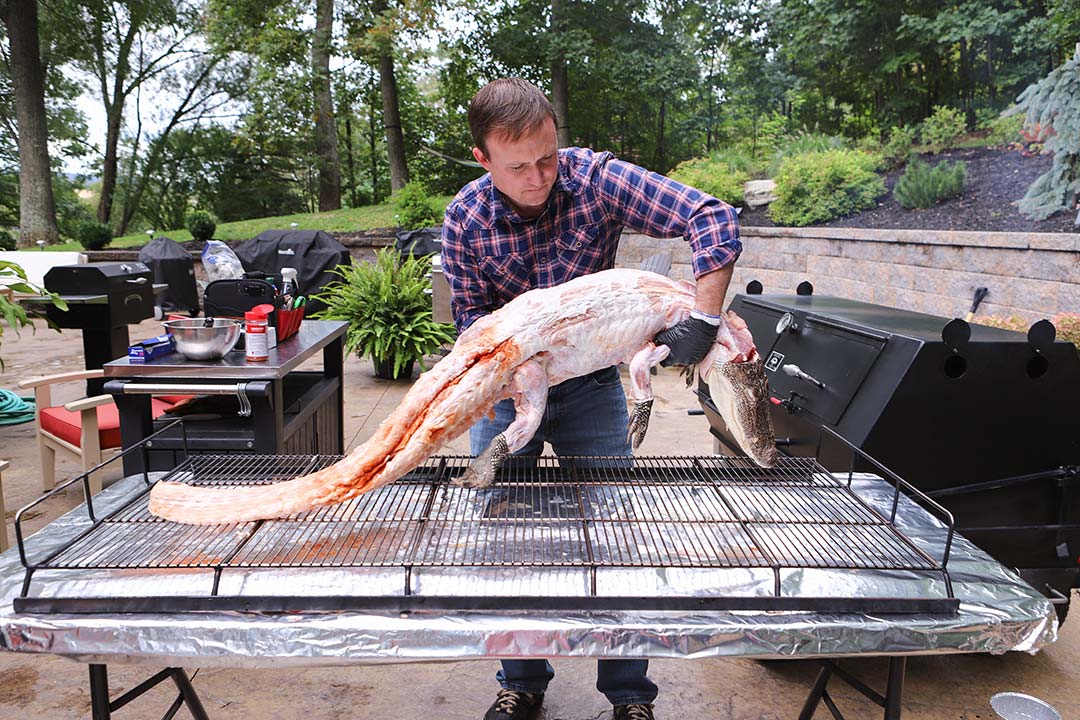
Flipping the gator for "surgery" on the bottom tail
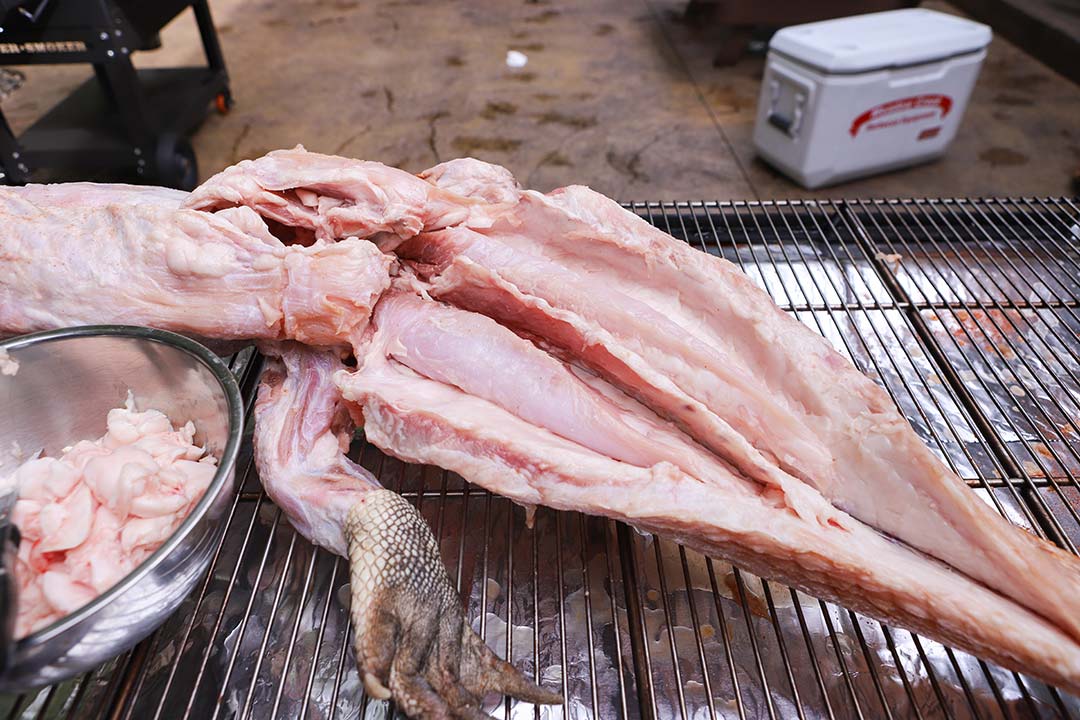
Bottom tail sliced open, revealing the tenderloins
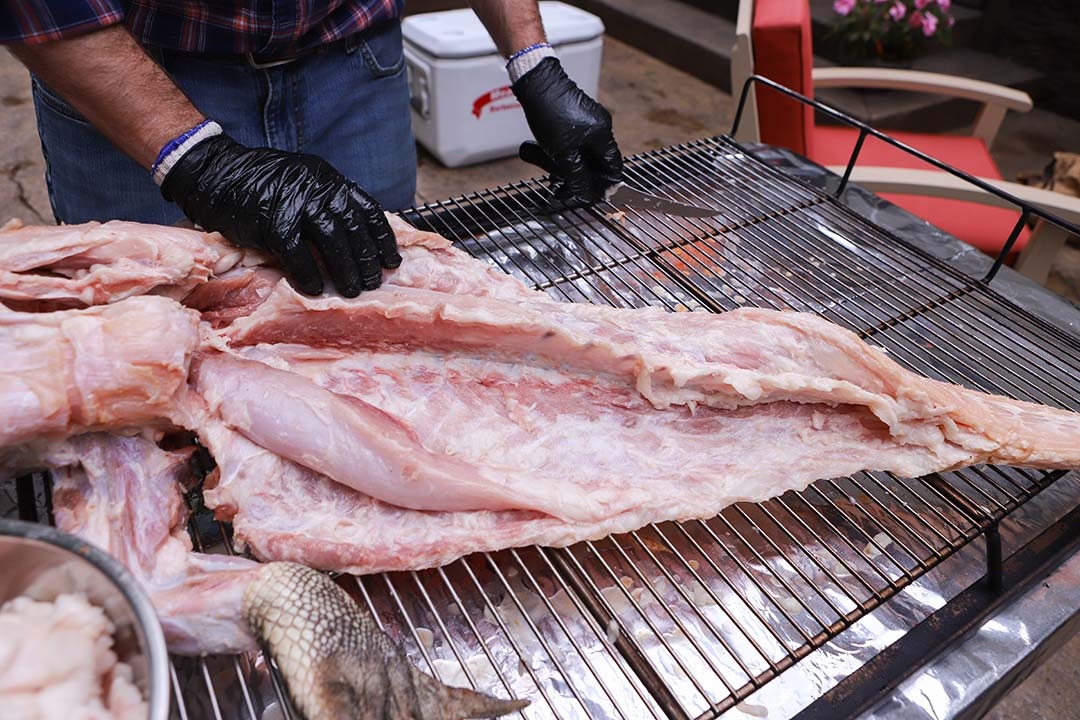
Fat on bottom tail removed
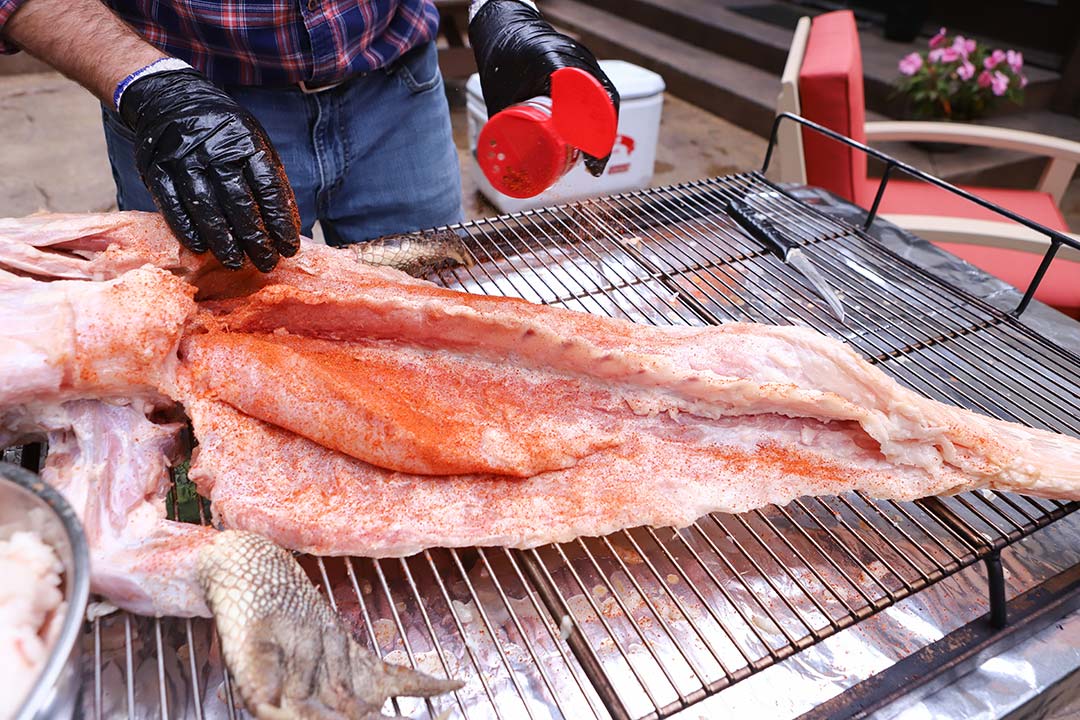
Seasoning the bottom tail
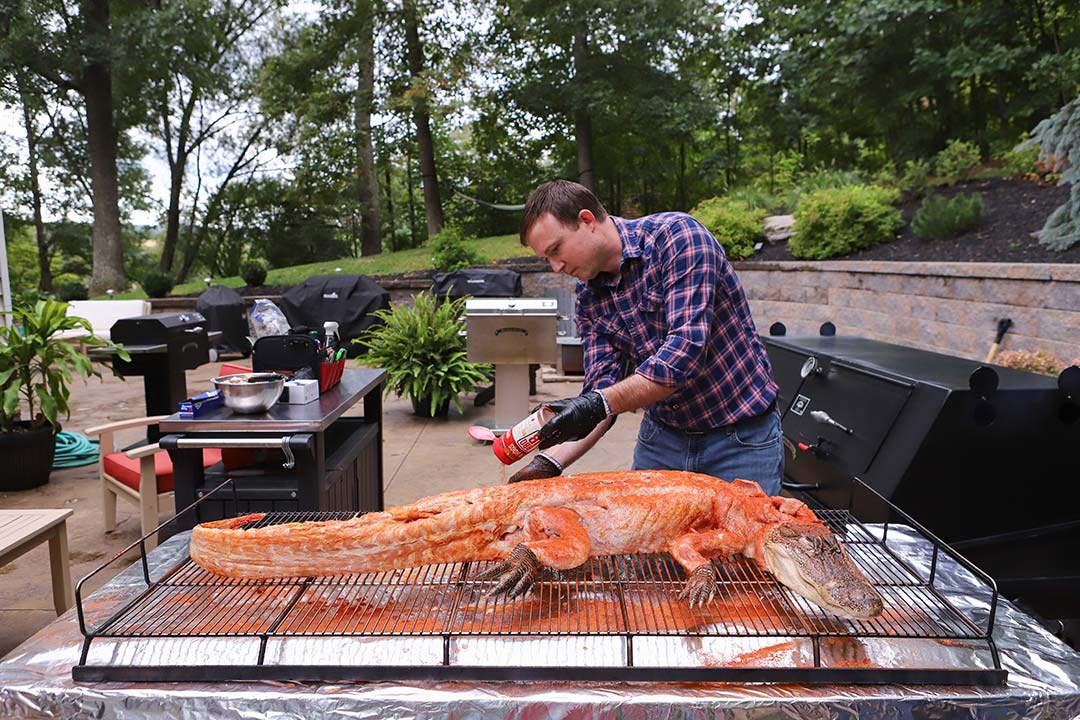
Seasoning the entire gator
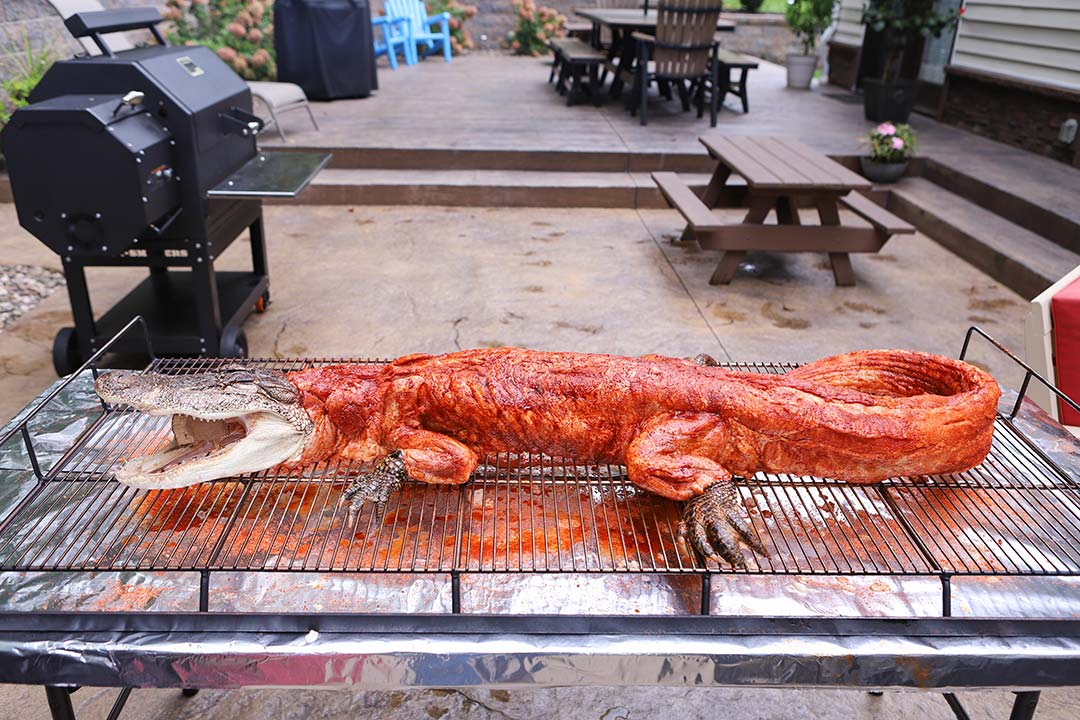
Ready for the smoker
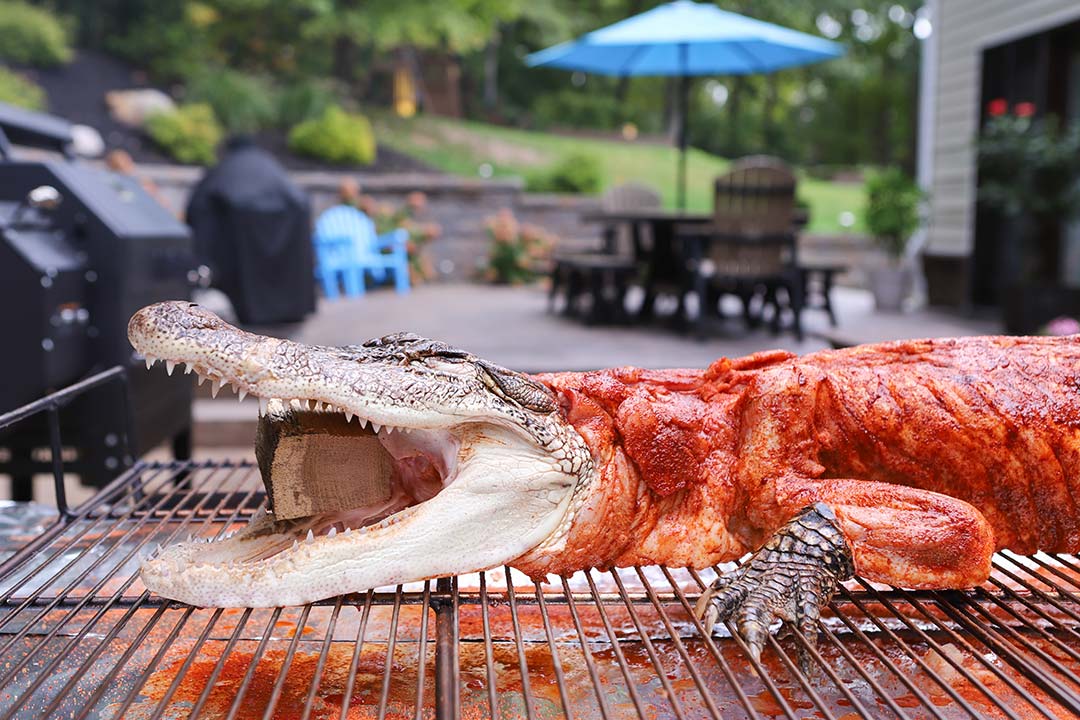
Block of wood propping open the mouth
For this recipe, I’m using my Meadow Creek PR60T Pig Roaster fired with 40 pounds of Royal Oak 100% hardwood charcoal briquettes and a few chunks of smoking wood, running at 275 degrees F.
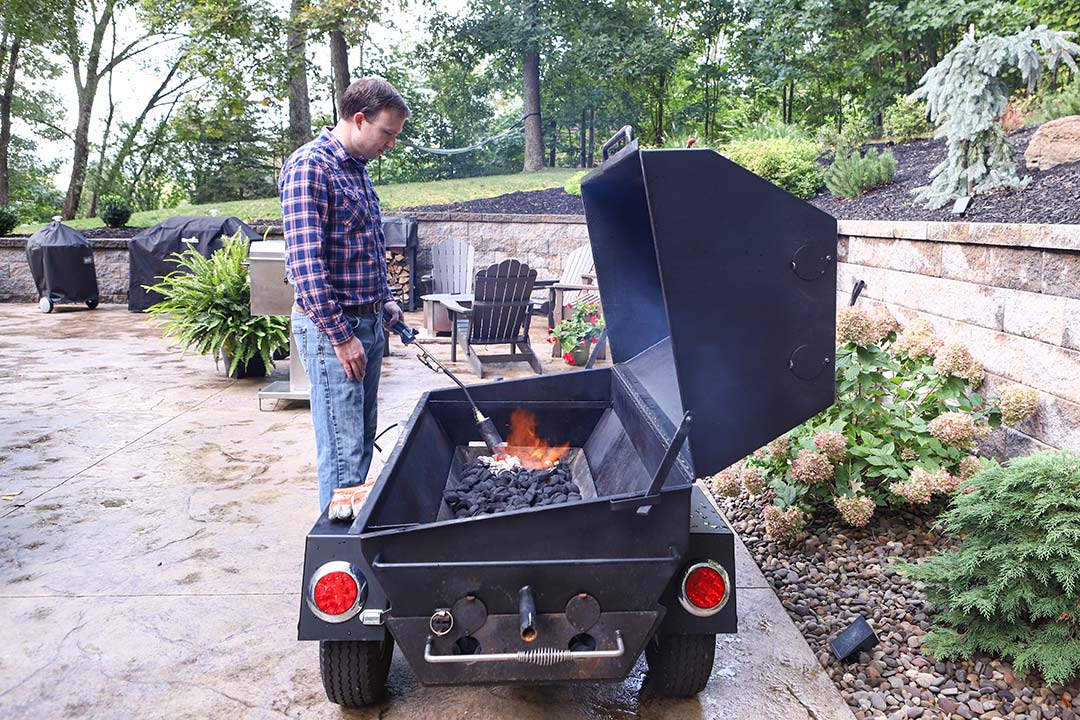
Step 1: Remove the cooking grate and drip pan. Spread 100% hardwood charcoal briquettes and smoking wood in the bottom of the roaster. The amount of charcoal you use will depend on the outside temperature and how long the cook will take. For this cook, 40 pounds of charcoal was plenty.
Step 2: Light the charcoal in both ends with a propane torch. Leave the lid open for a few minutes to let the charcoal get well lit.
Step 3: Replace the drip pan and cooking grate and close the lid with the top and bottom vents open all the way.
Step 4: Once the roaster gets within 15 degrees of your target temperature, close both bottom sliding vents to 1" open. If you have a pullout with the round vents on one end, close those vents to the halfway open position. If the roaster temperature rises above your target temperature, adjust the top vents a little bit at a time to stabilize and maintain the target temperature. Start by adjusting one top vent on each end to the 3/4 open position. You might also need to adjust the bottom vents if the fire is too aggressive.
If you are not able to get the smoker hot enough, simply open the lid for 5–10 minutes to let the fire get more established. If it's running too hot, try to keep the lid closed as much as possible.
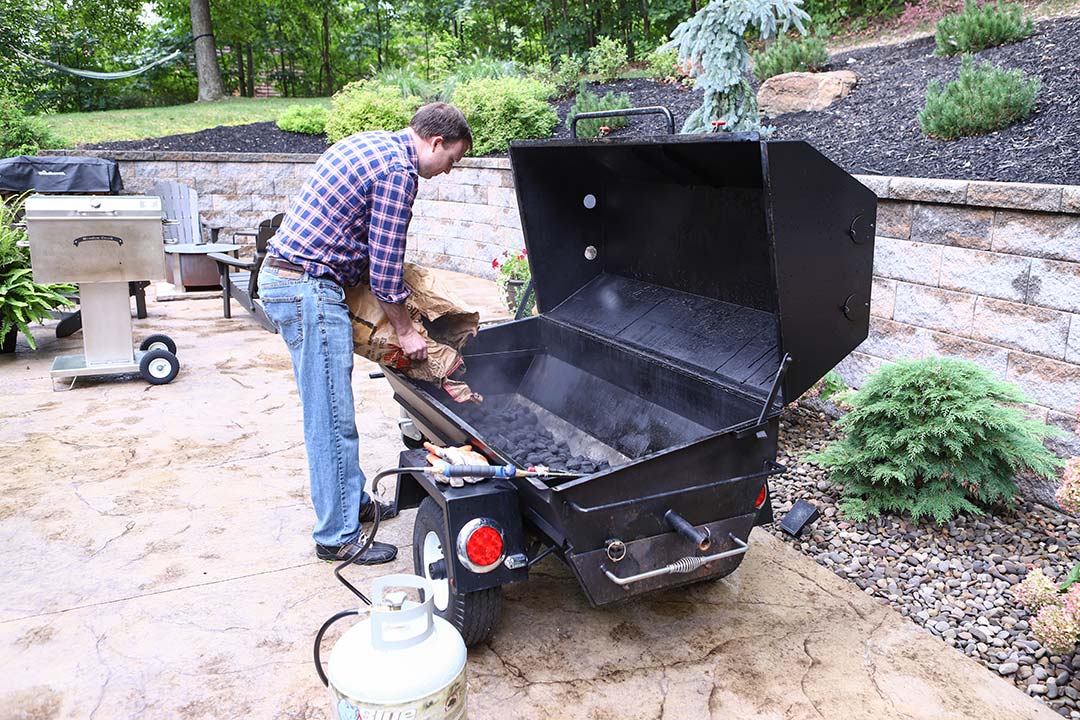
Adding 40 pounds of Royal Oak Chef's Select charcoal
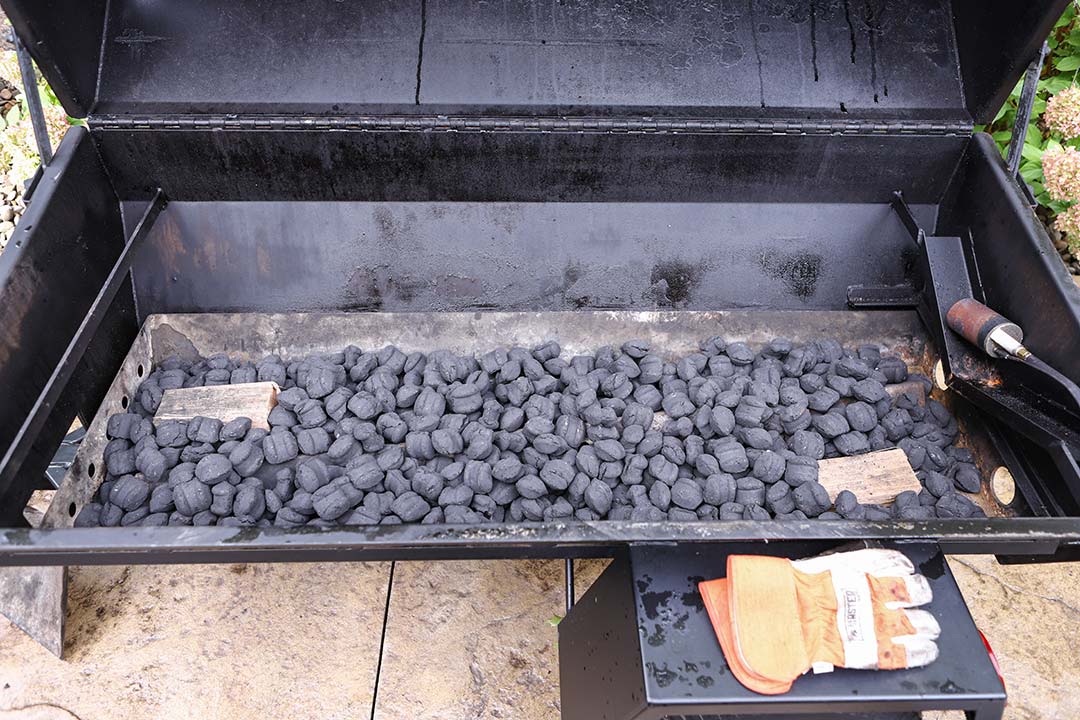
Charcoal and wood added
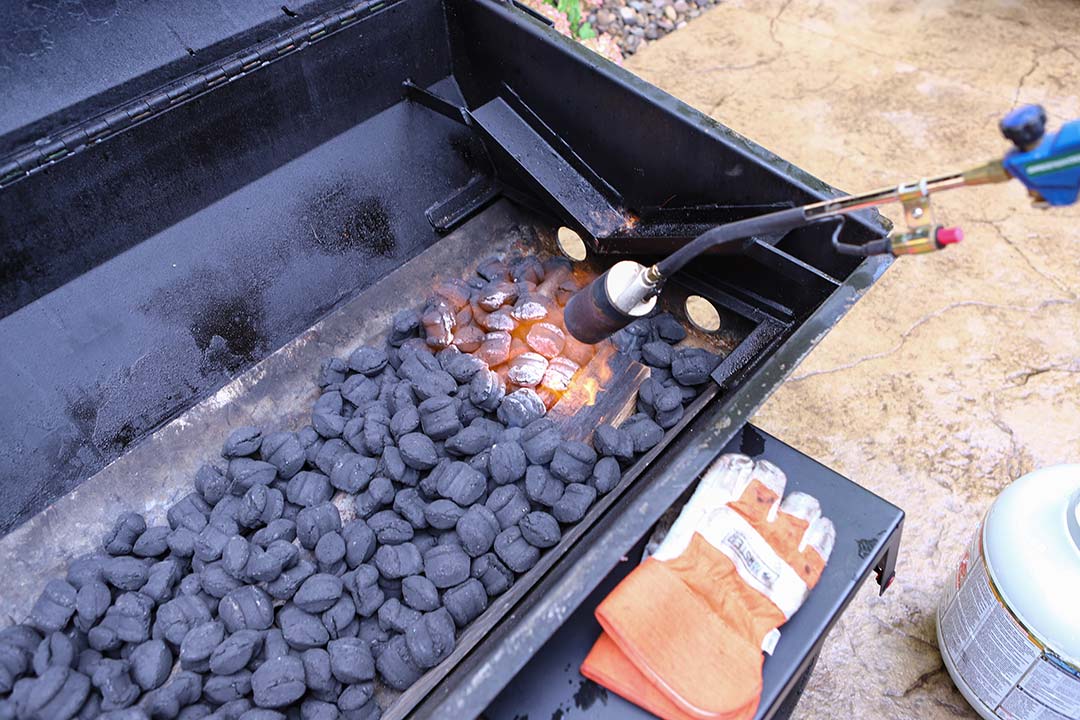
Lighting the charcoal with my propane torch
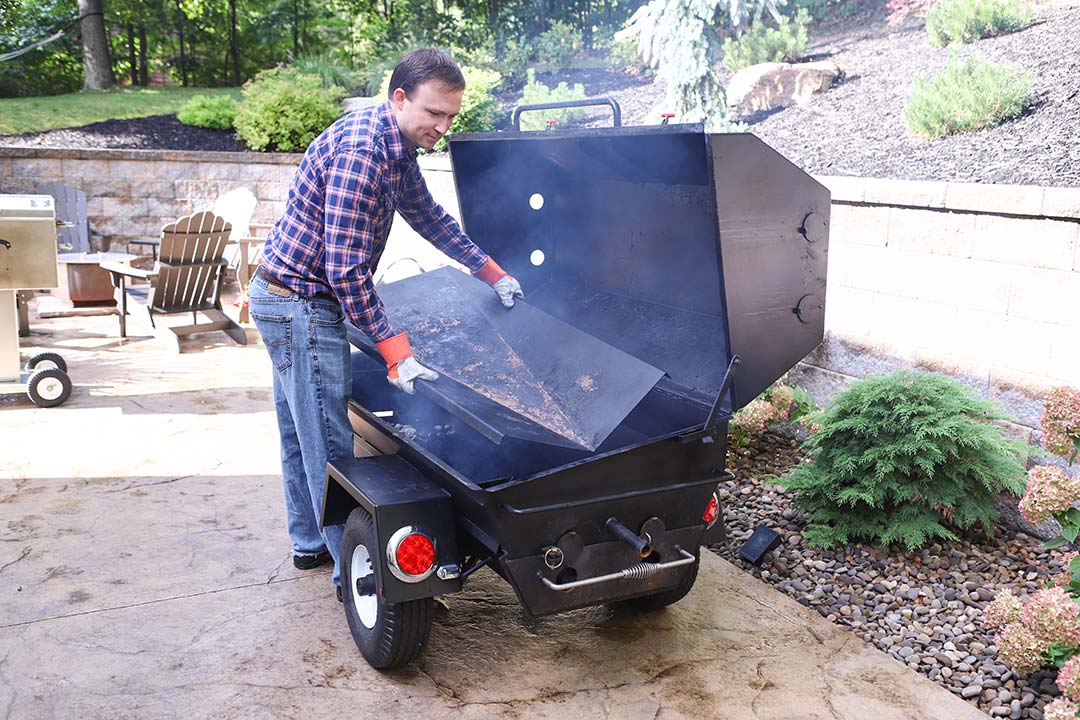
Replacing the drip pan
Here are some photos of the alligator on the smoker.
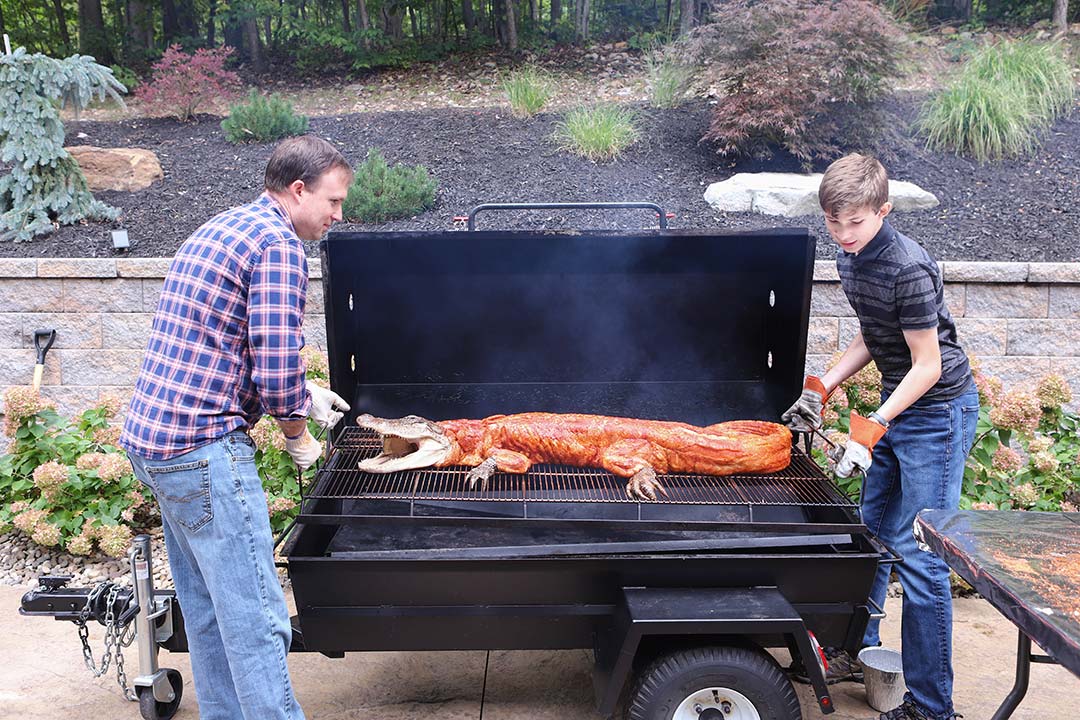
Transferring the grate and gator to the smoker
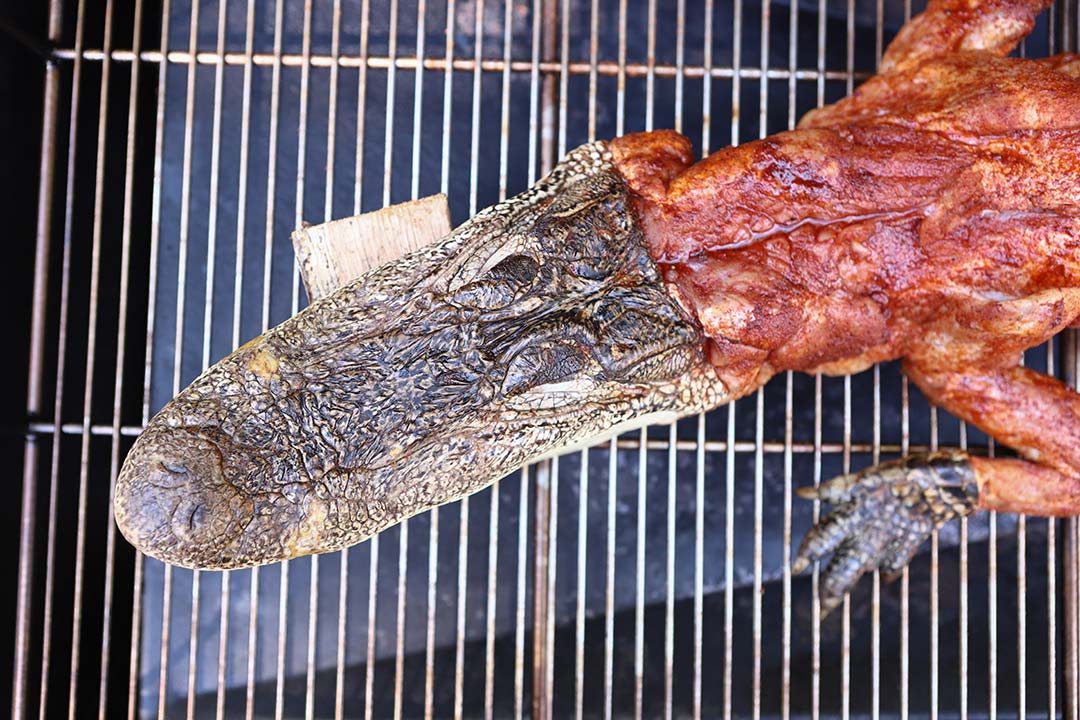
Look at that nose!
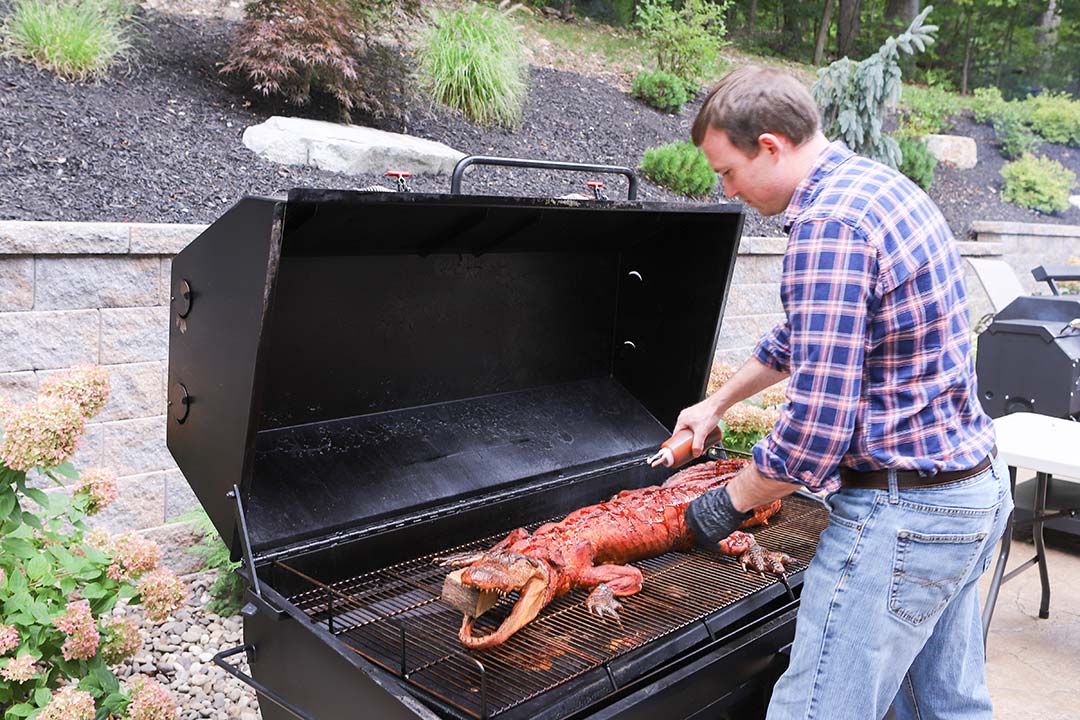
Glazing with sauce
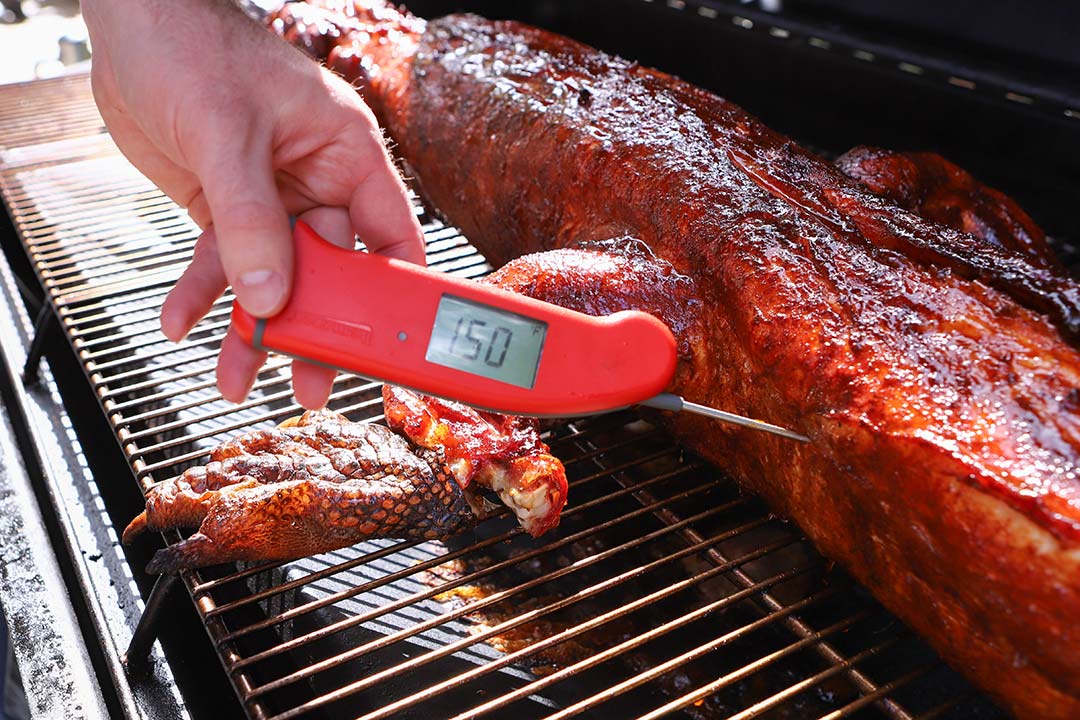
Temping the tail
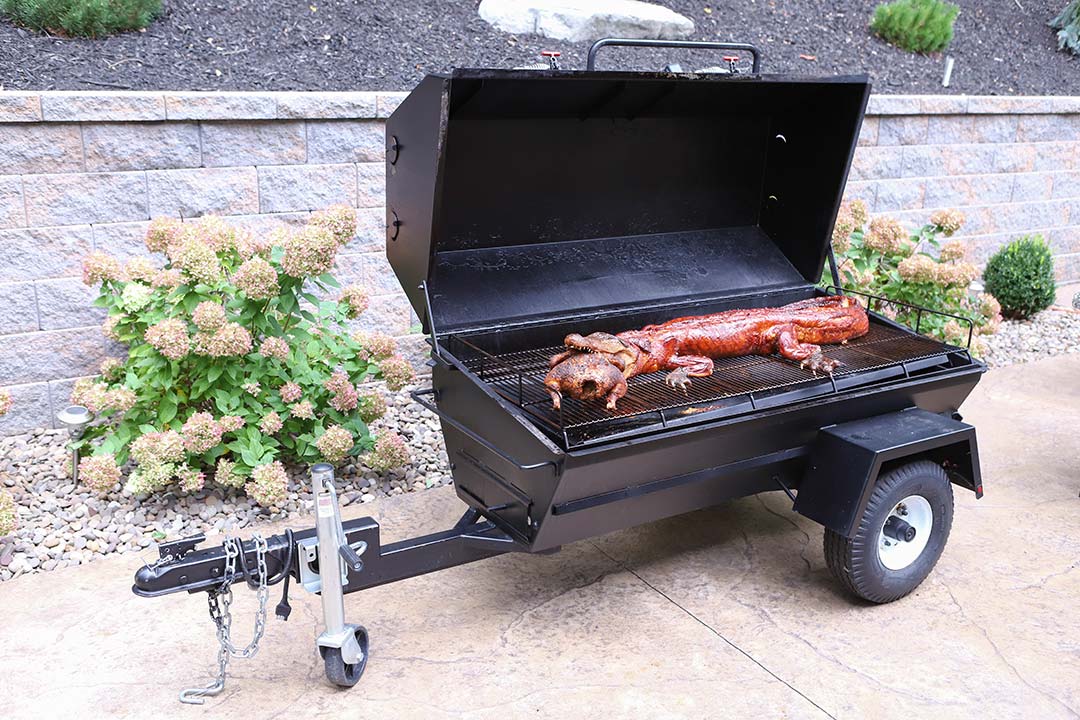
Cooked alligator "eating" a whole chicken
When it was done, we set the grate on a table and garnished it with kale and a whole smoked chicken.
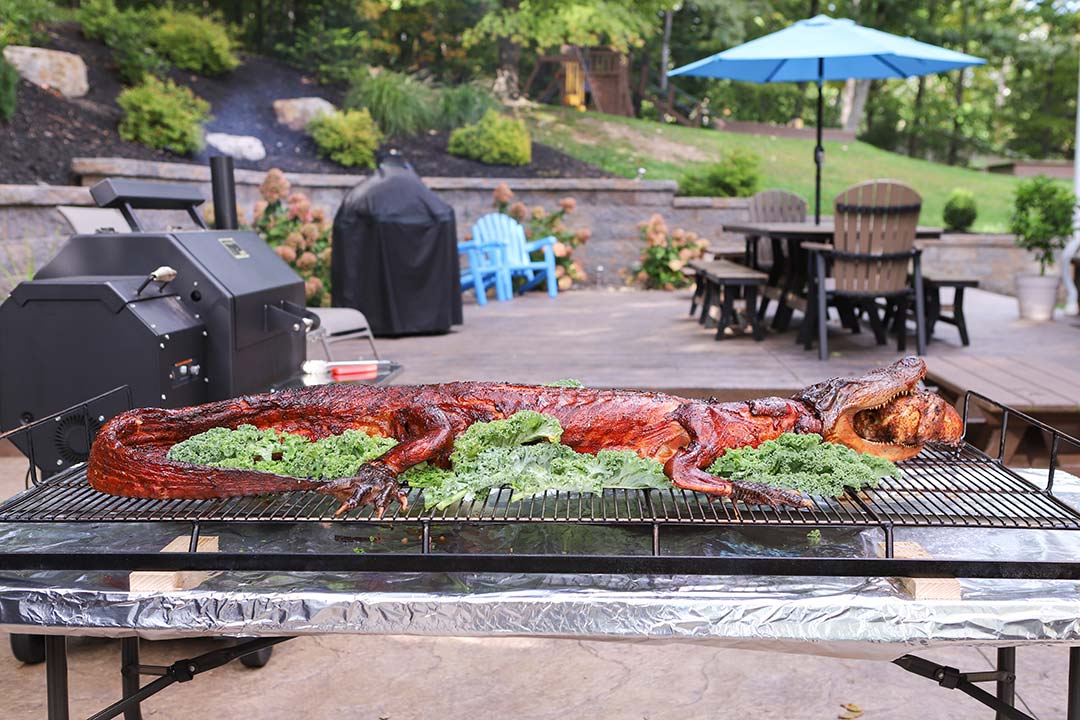
Cooked whole alligator
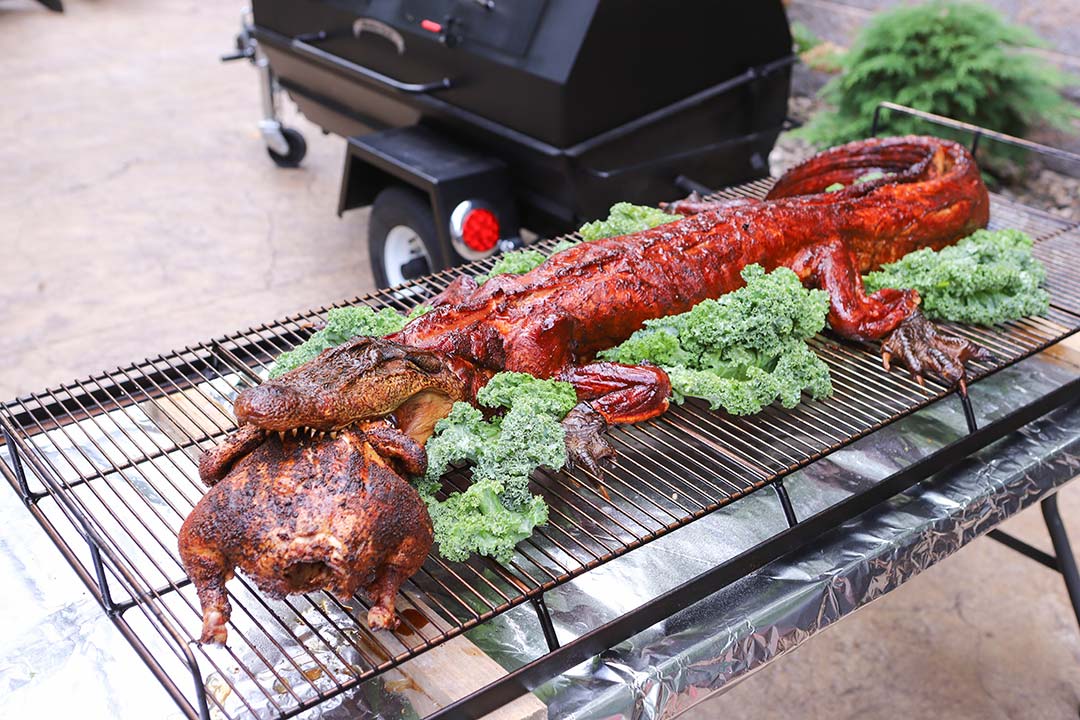
Head view
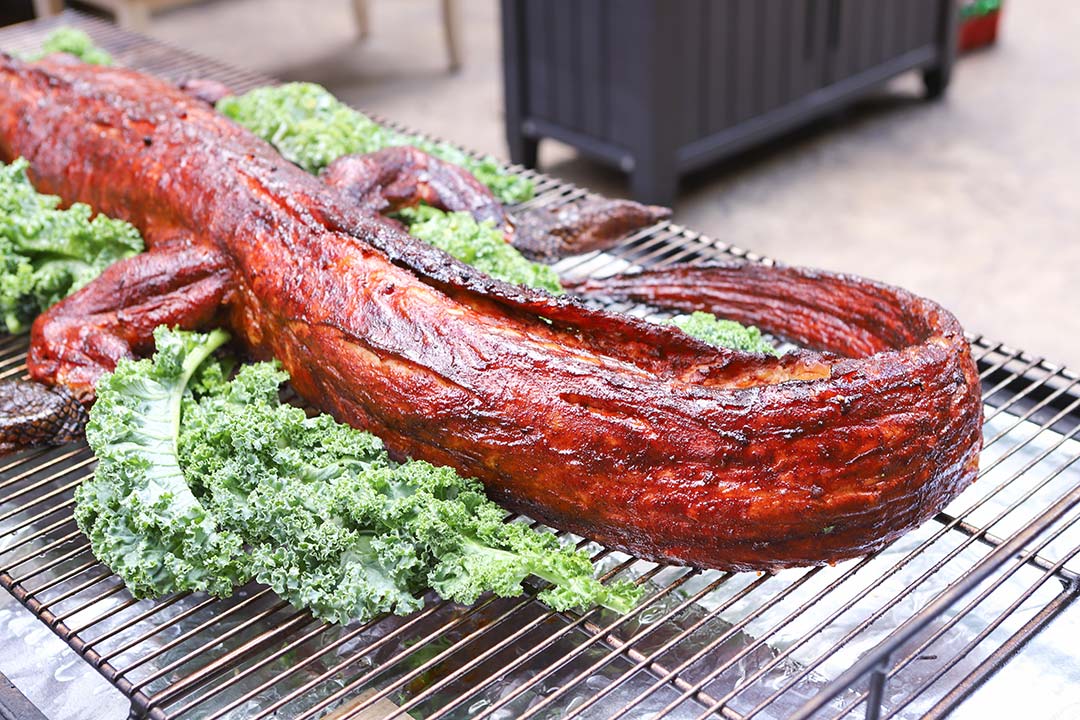
Look at that shine!
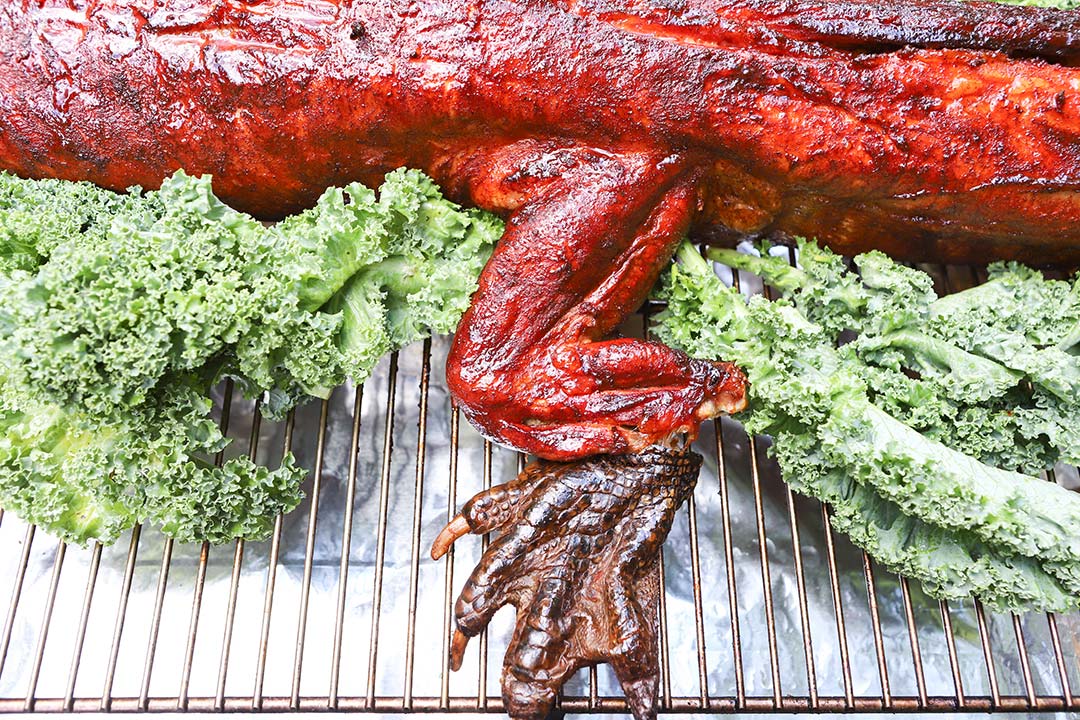
Close-up of leg
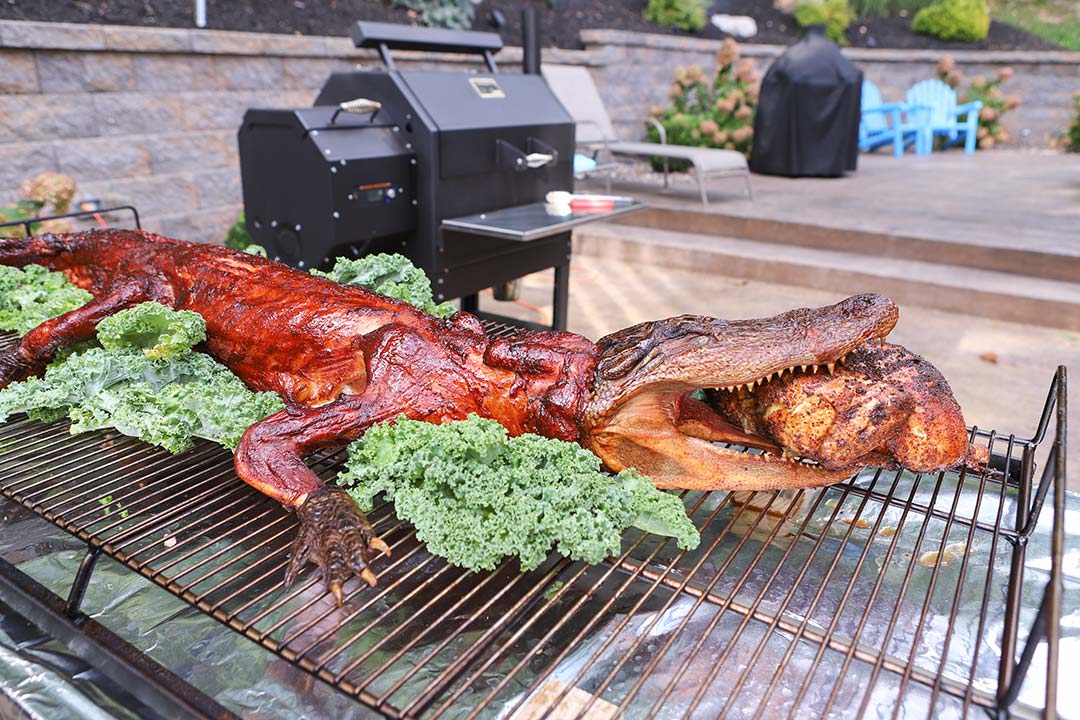
I'd hate to get in the way of those teeth!
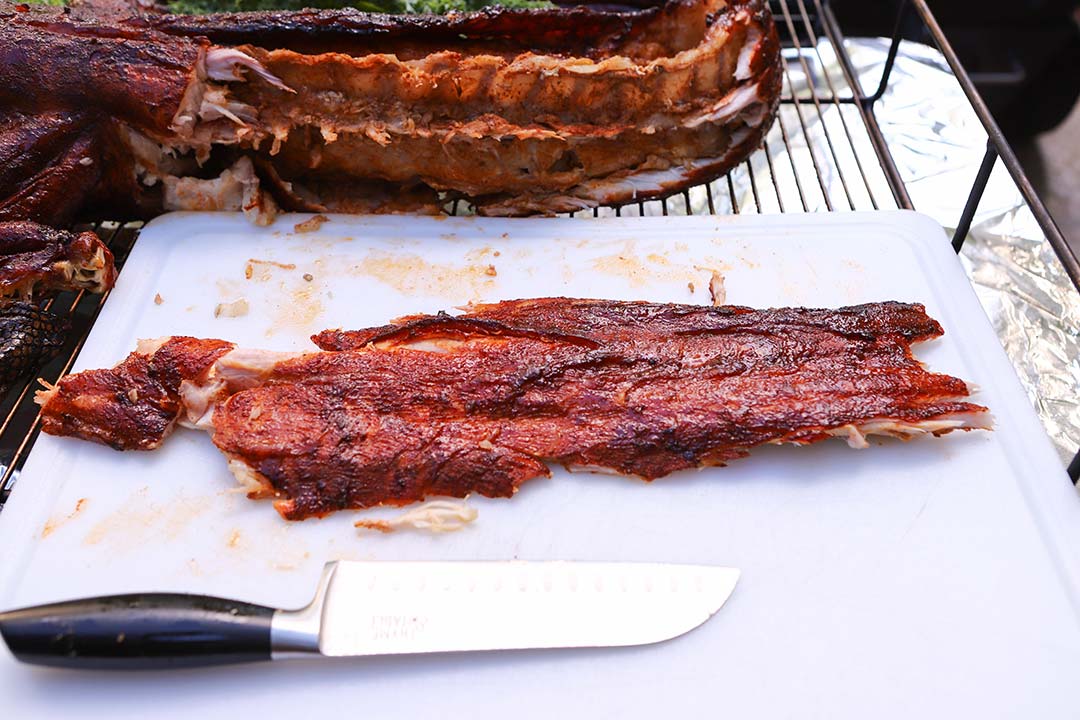
Tail meat
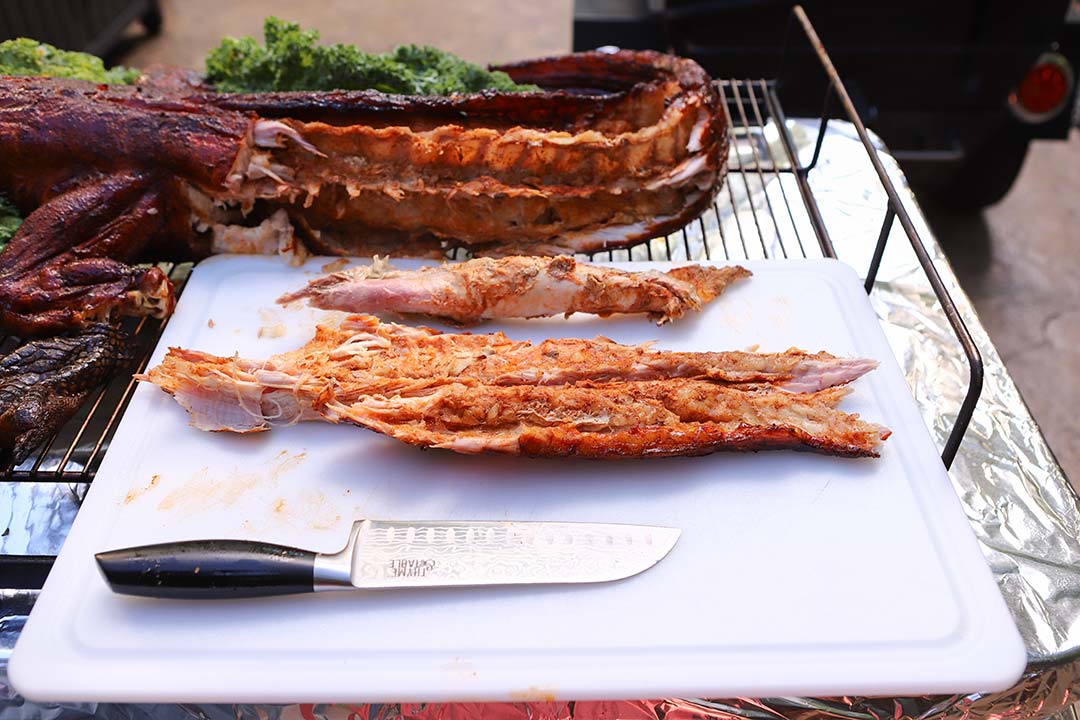
Tail meat
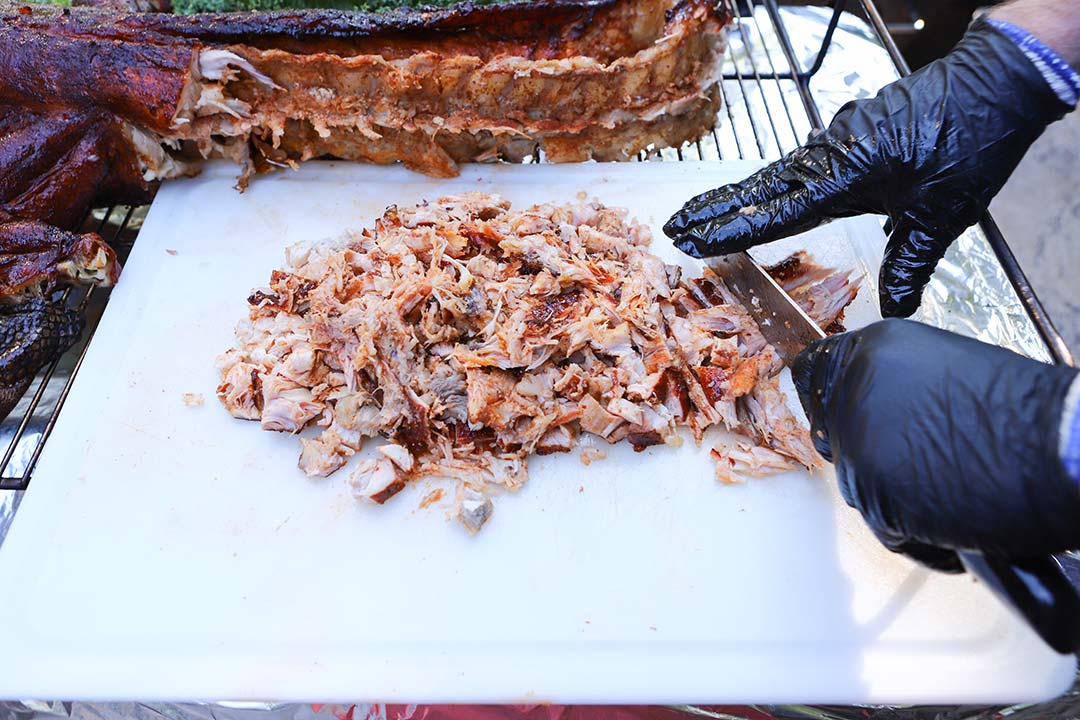
Chopped gator
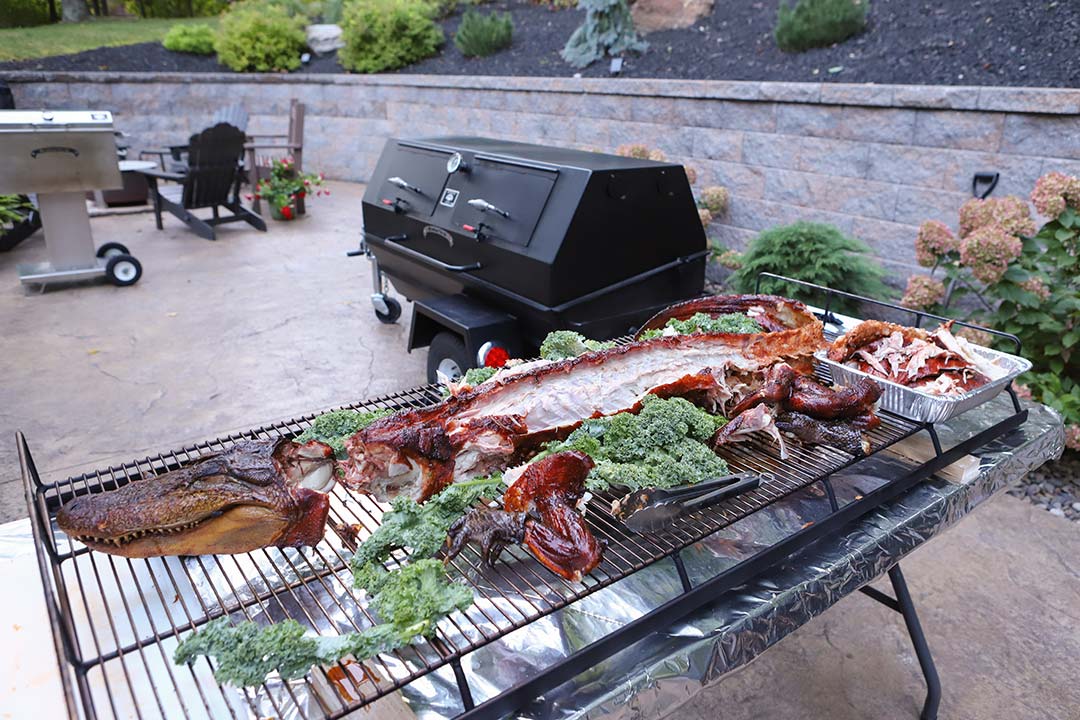
Disassembling the gator
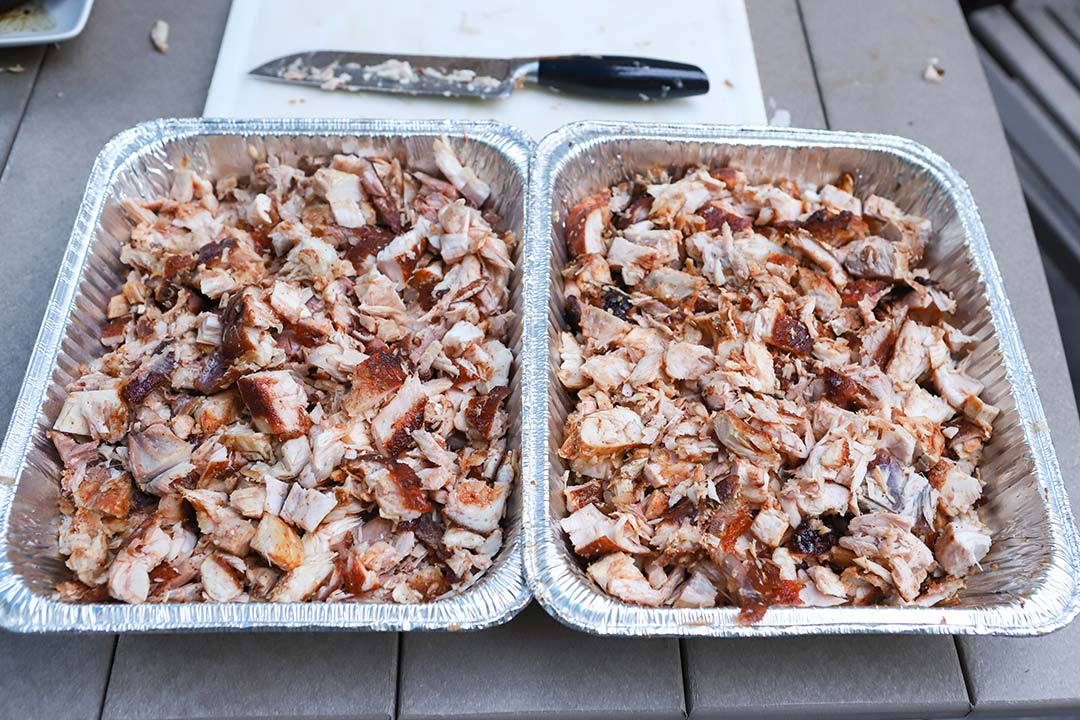
Chopped gator meat
The meat was delicious! We made alligator tacos with avocado slices, sour cream, feta cheese, and jalapeno slices the day of the cook and vacuum sealed the leftovers for the freezer.
Mexican-style tacos are an awesome way to enjoy this delicacy. I love the combination of avocado, jalapeno, sour cream, and feta cheese, but don't overthink it! Stack them with the ingredients you love and enjoy!
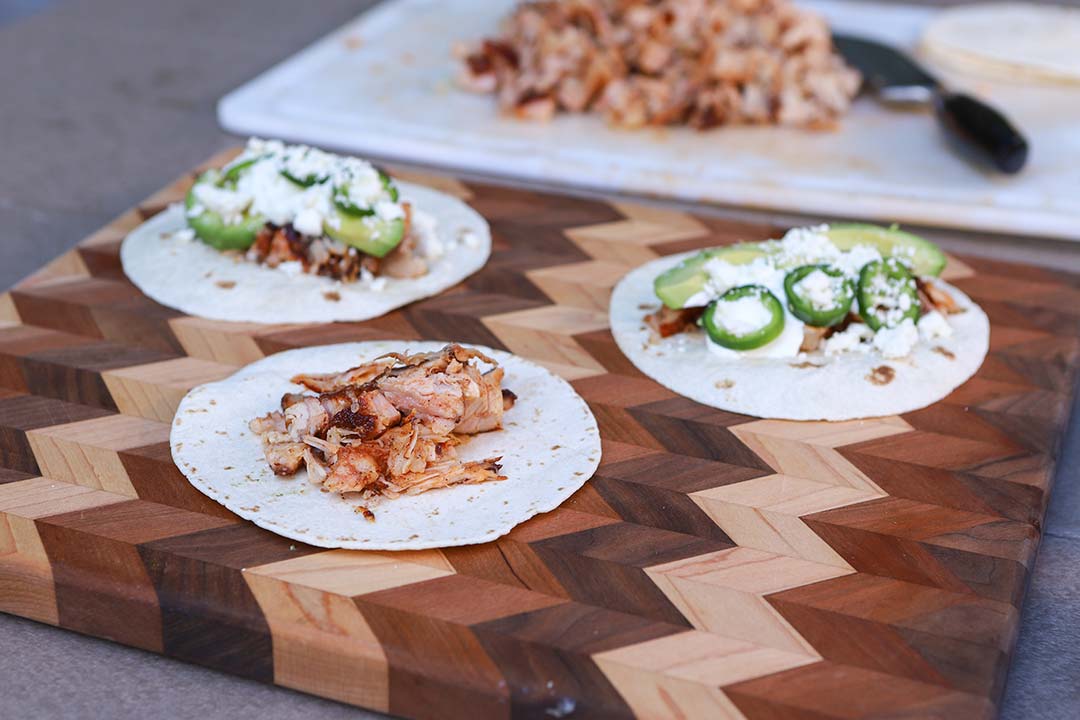
Building the tacos
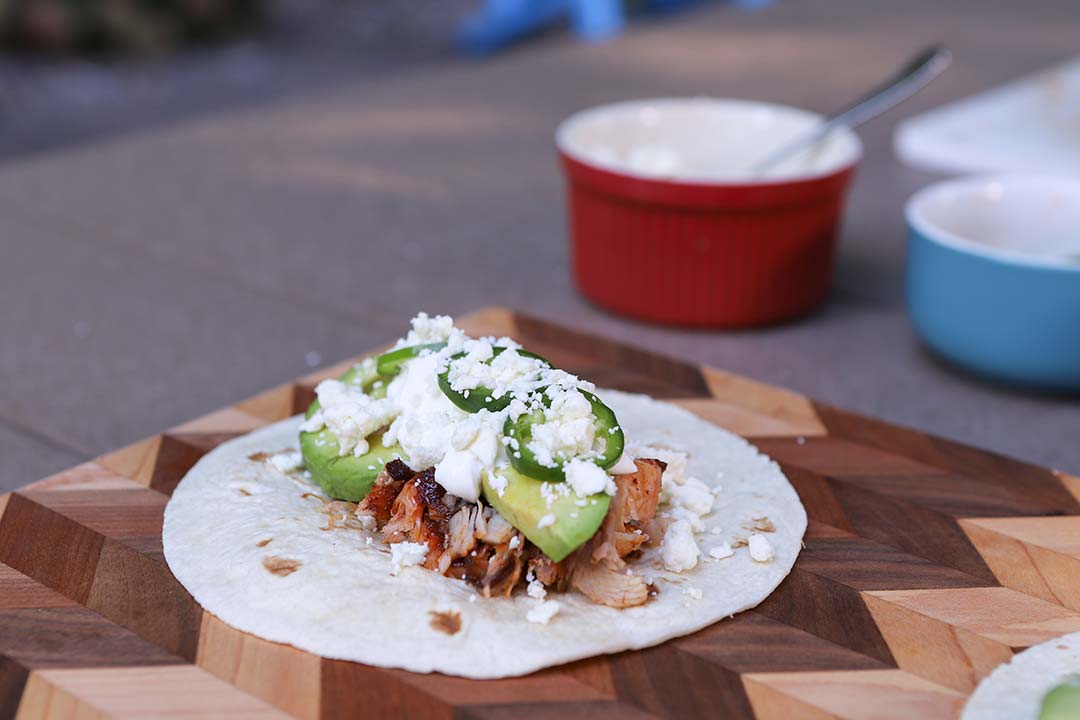
What a fantastic meal!
Click here to browse more photos, features, and specs on our PR series roasters. Choose a model and then click on "customize" to see available upgrades and suggested retail prices:
Tags
pig roasters, pork loin recipe, pr60t pig roaster
That alligator was an incredible, GREAT looking BBQ and it probably tasted as great or better than it looked!!!!
Do you have to buy the whole alligator
You can buy a few different alligator cuts from the supplier I mentioned in the blog post. Please check out their website.